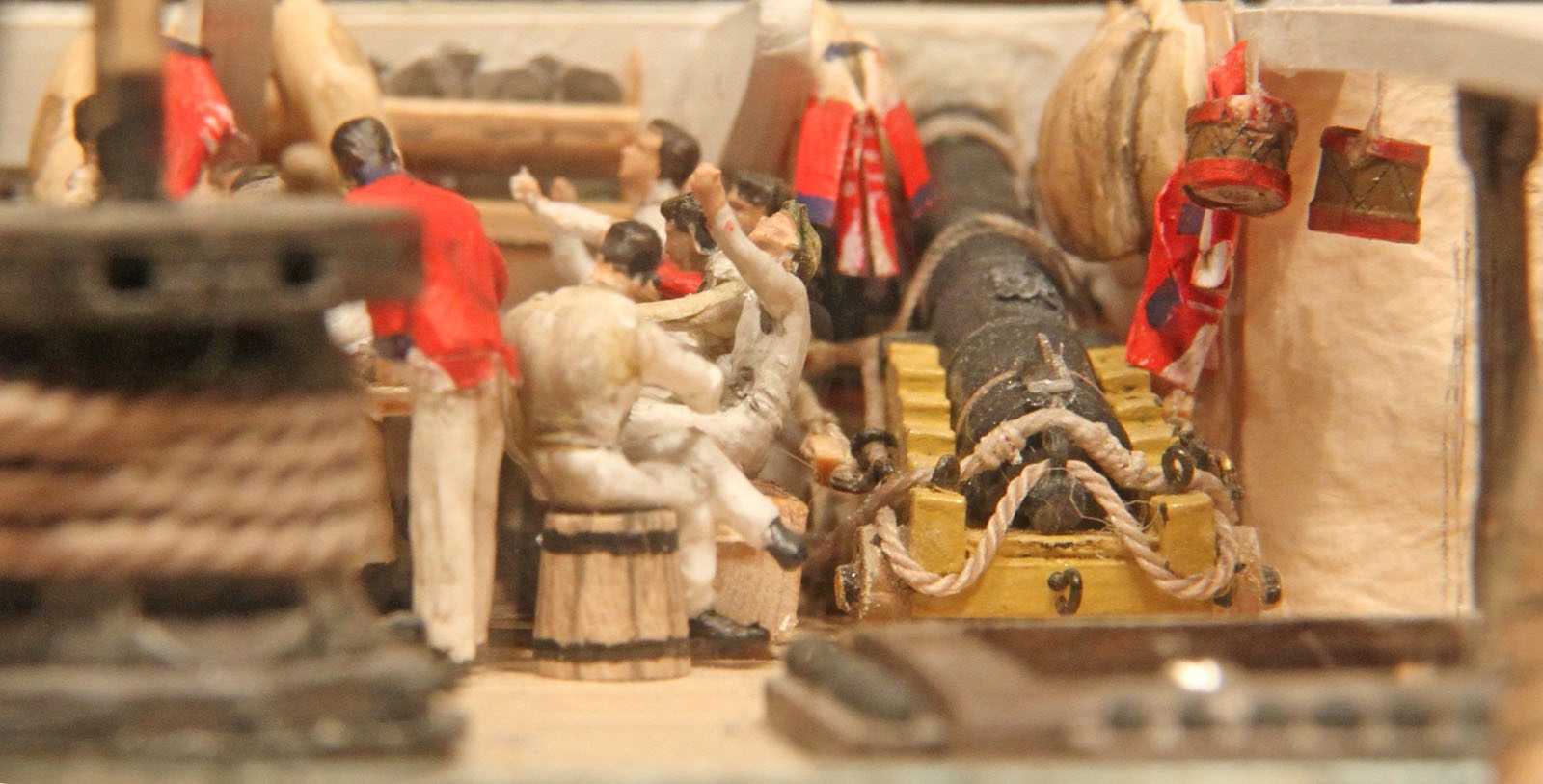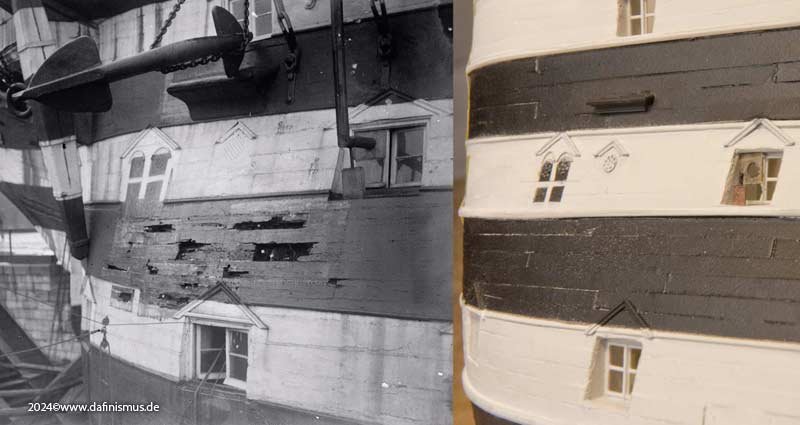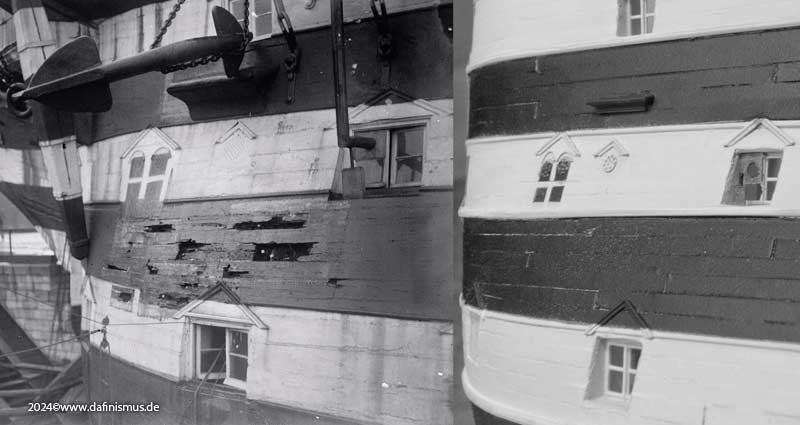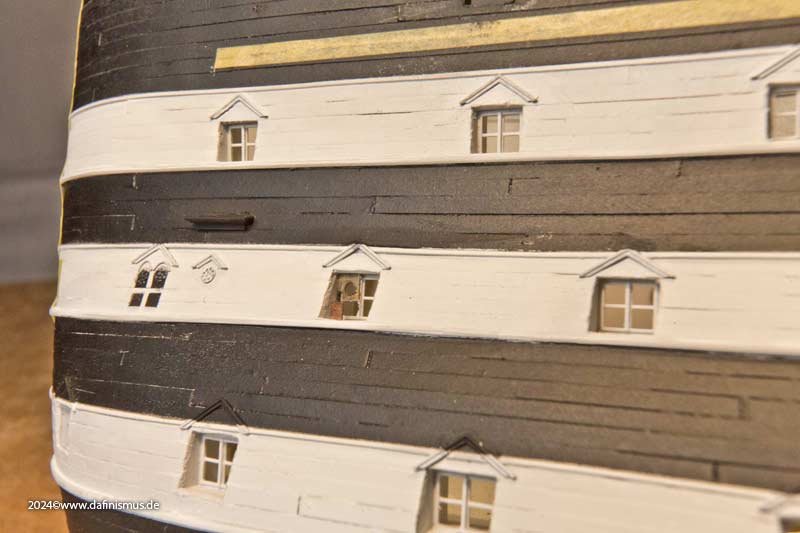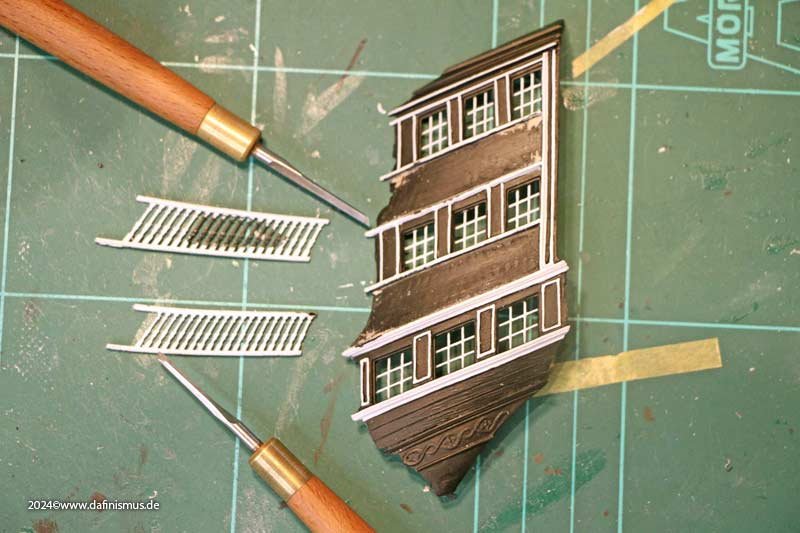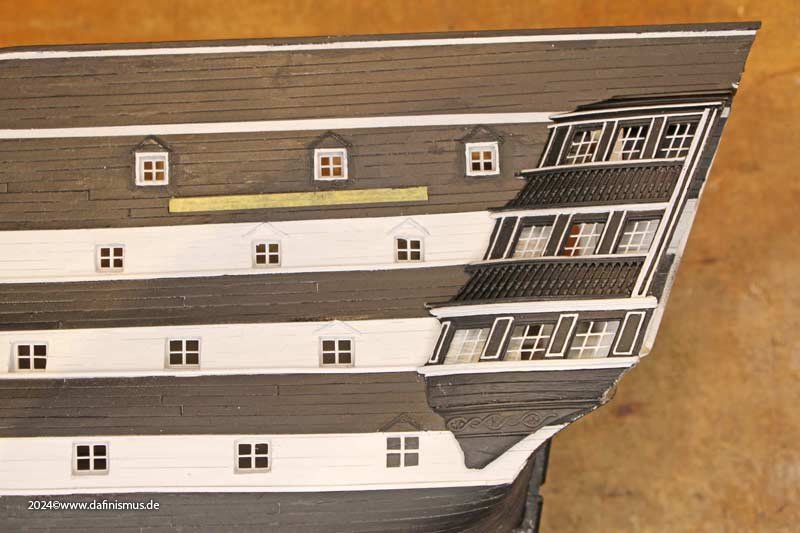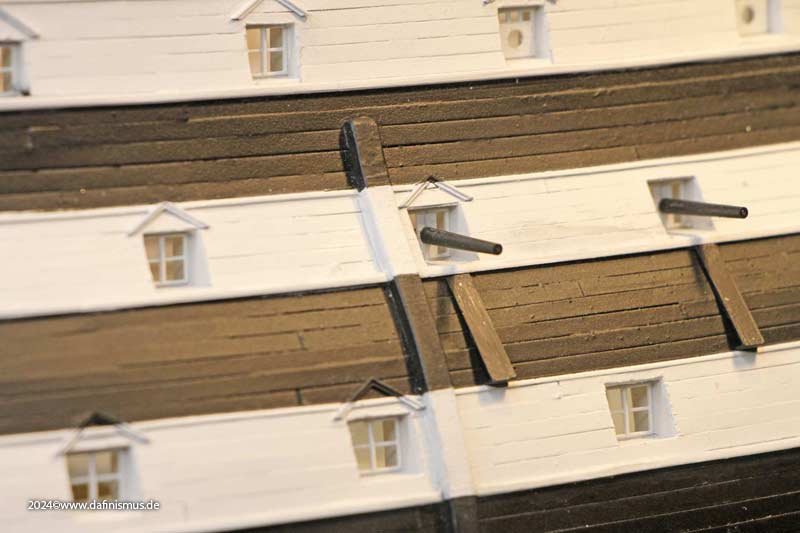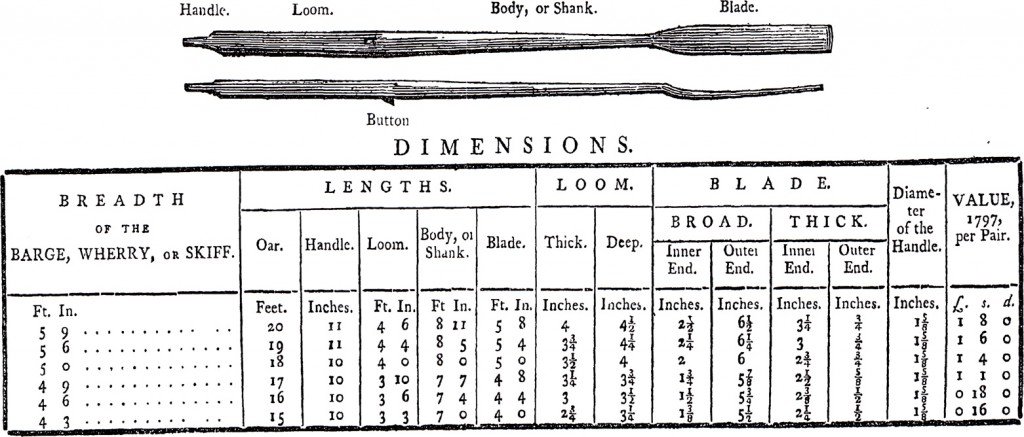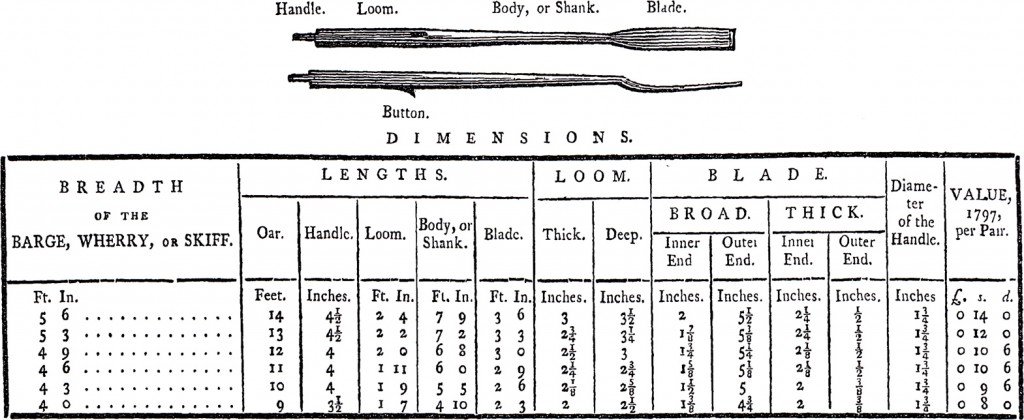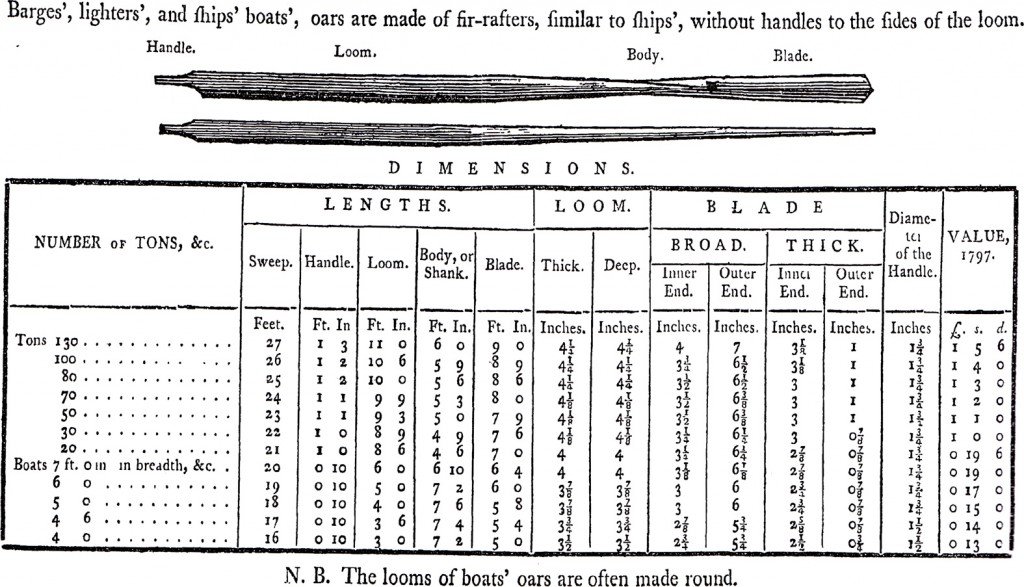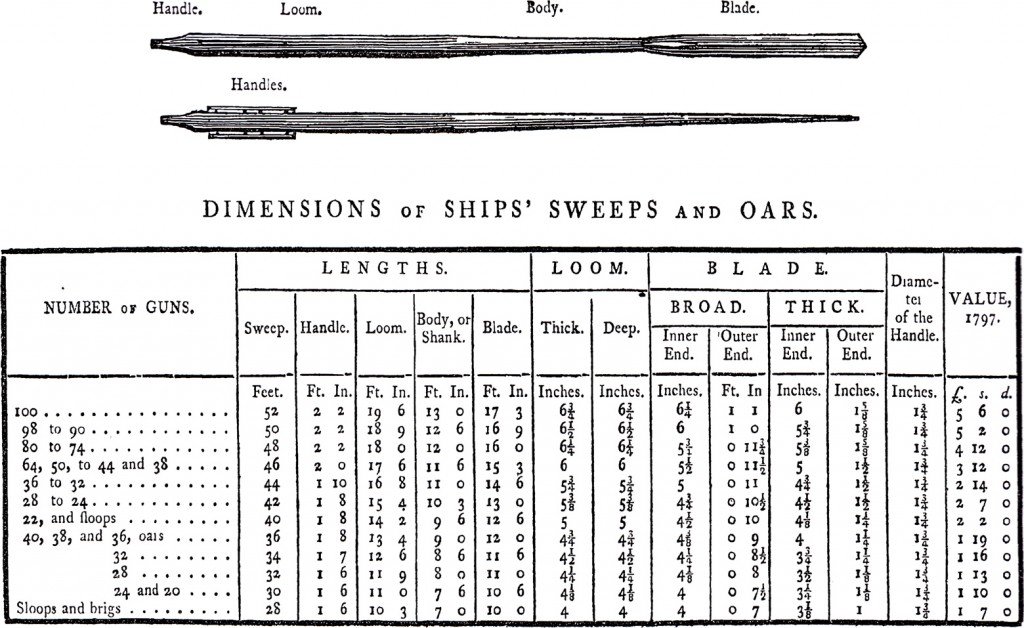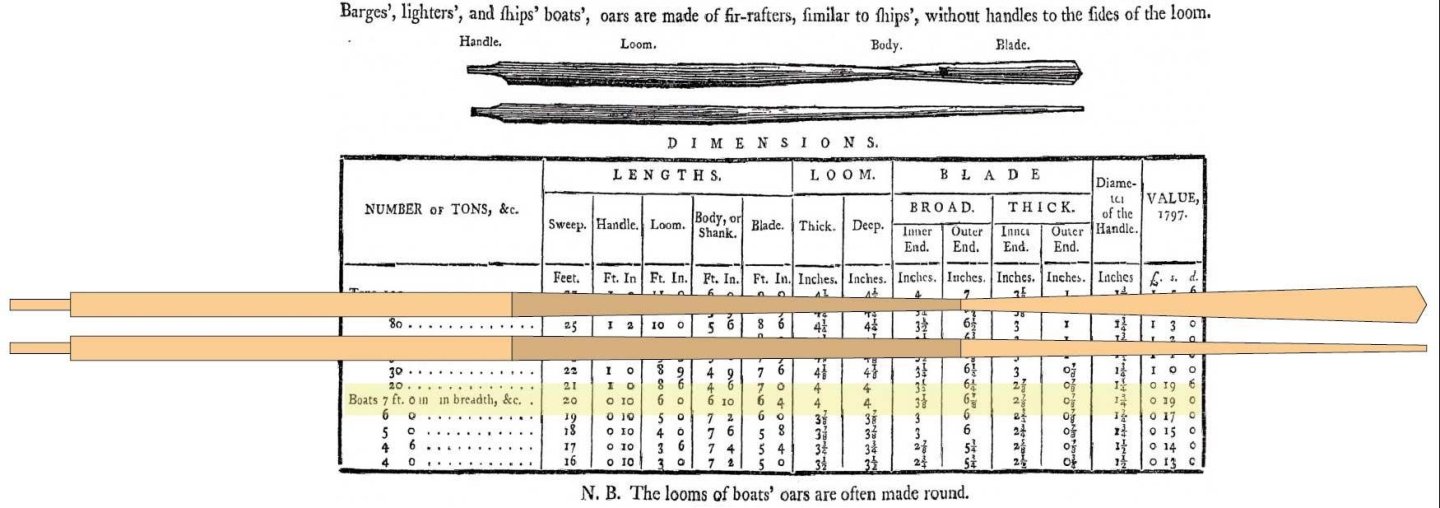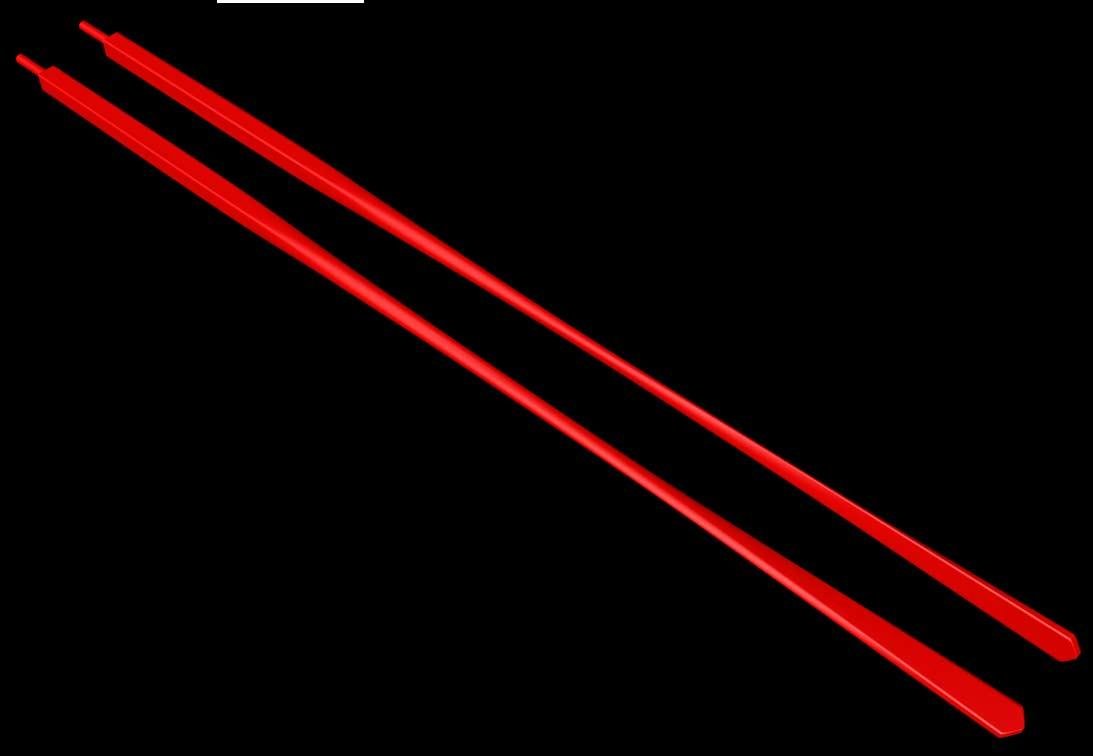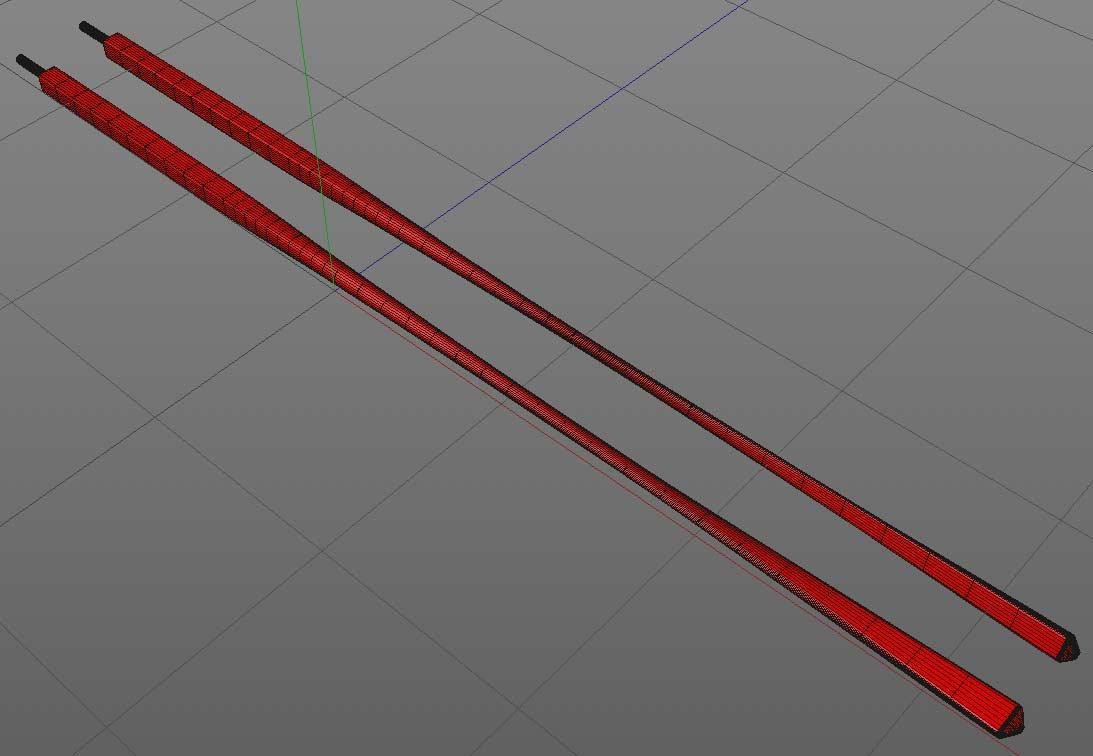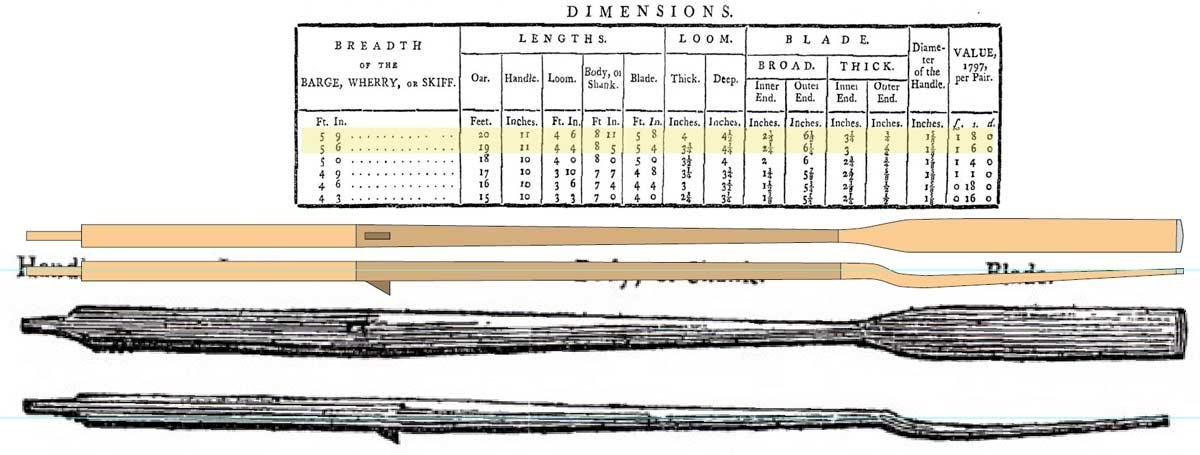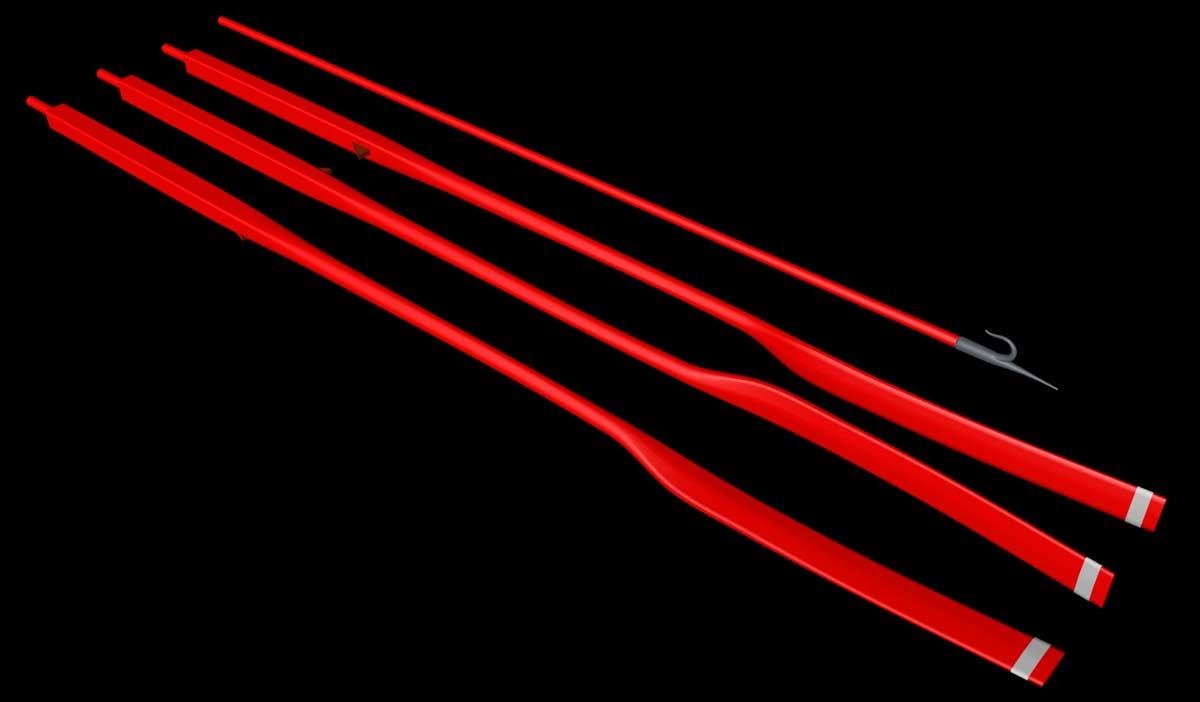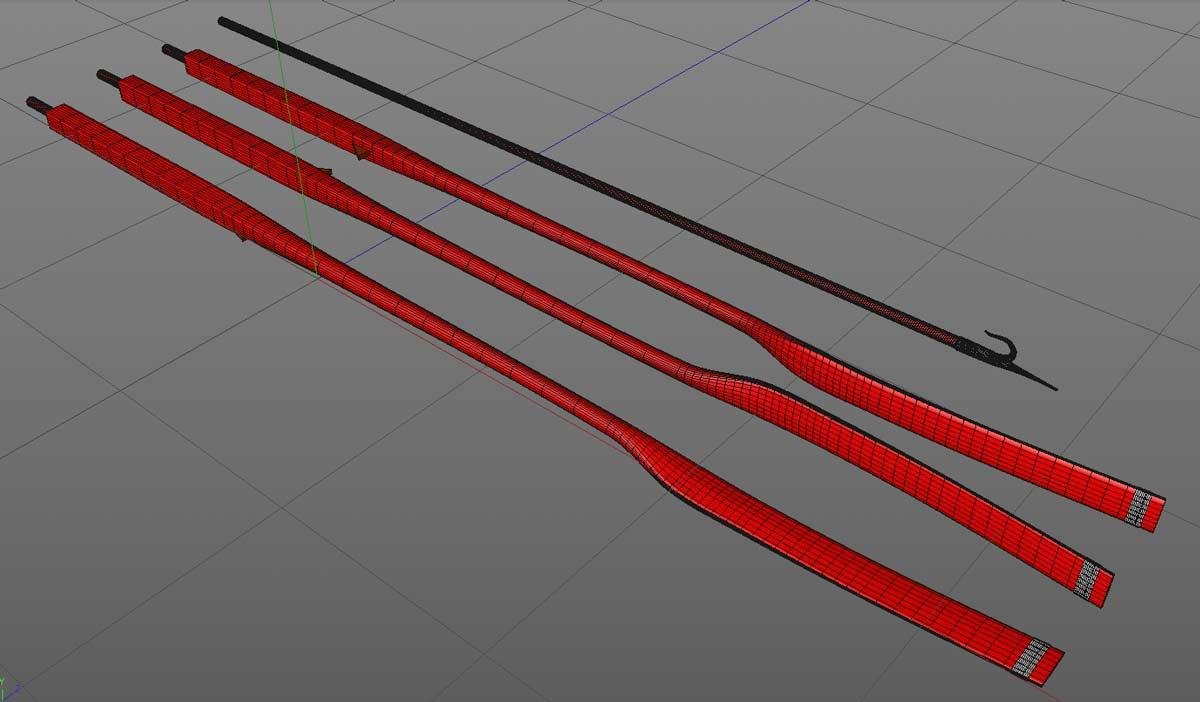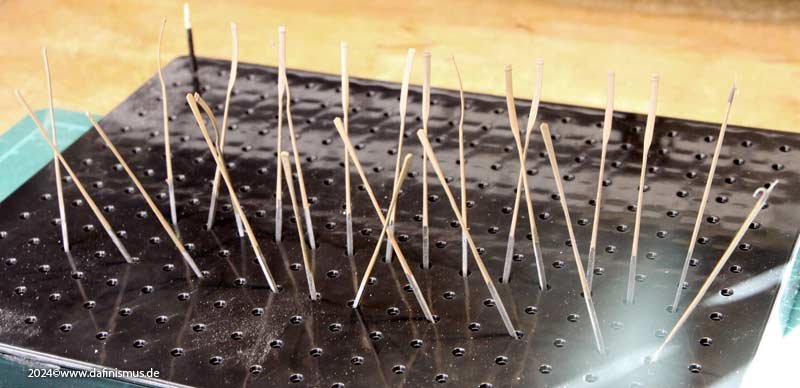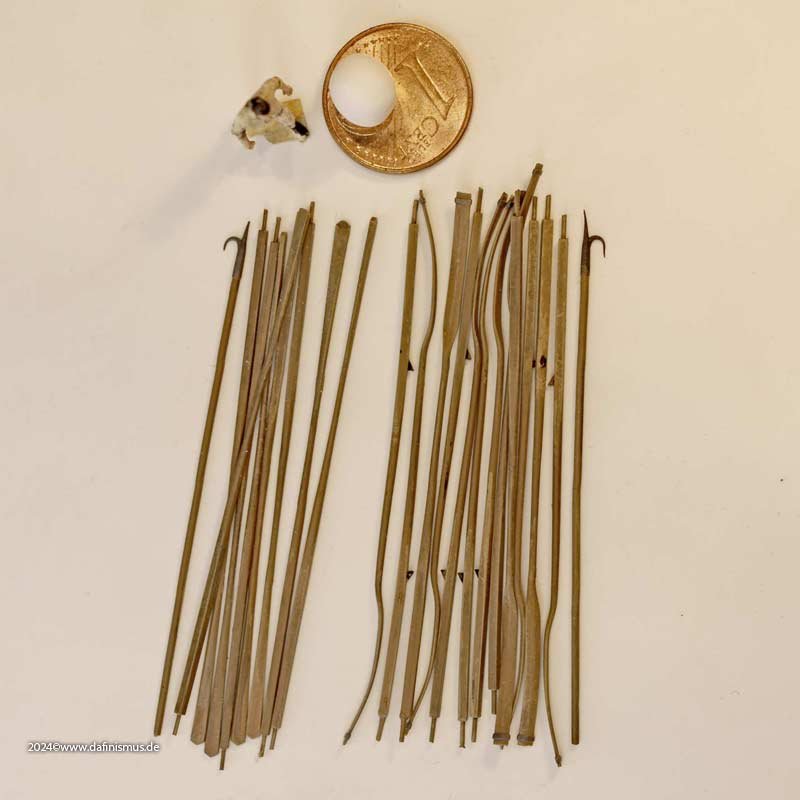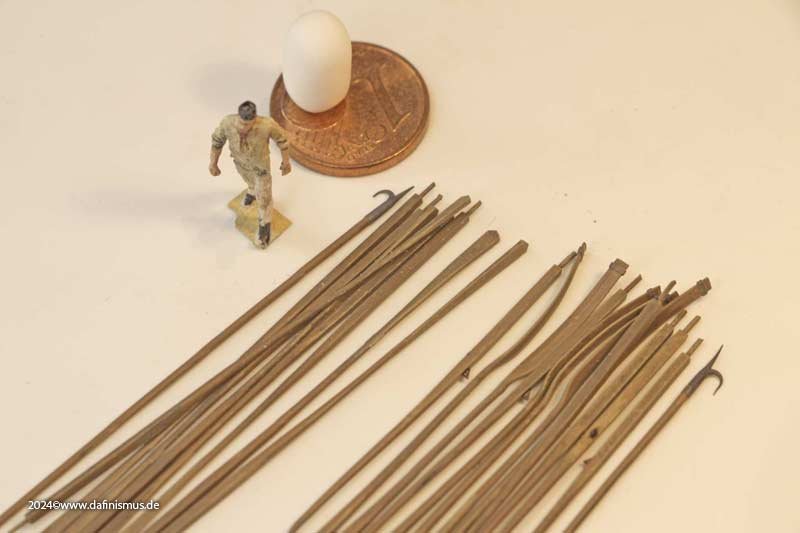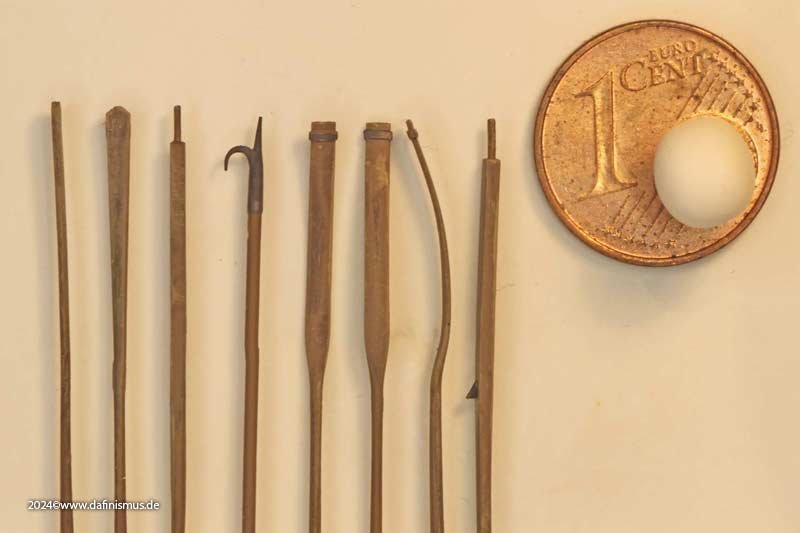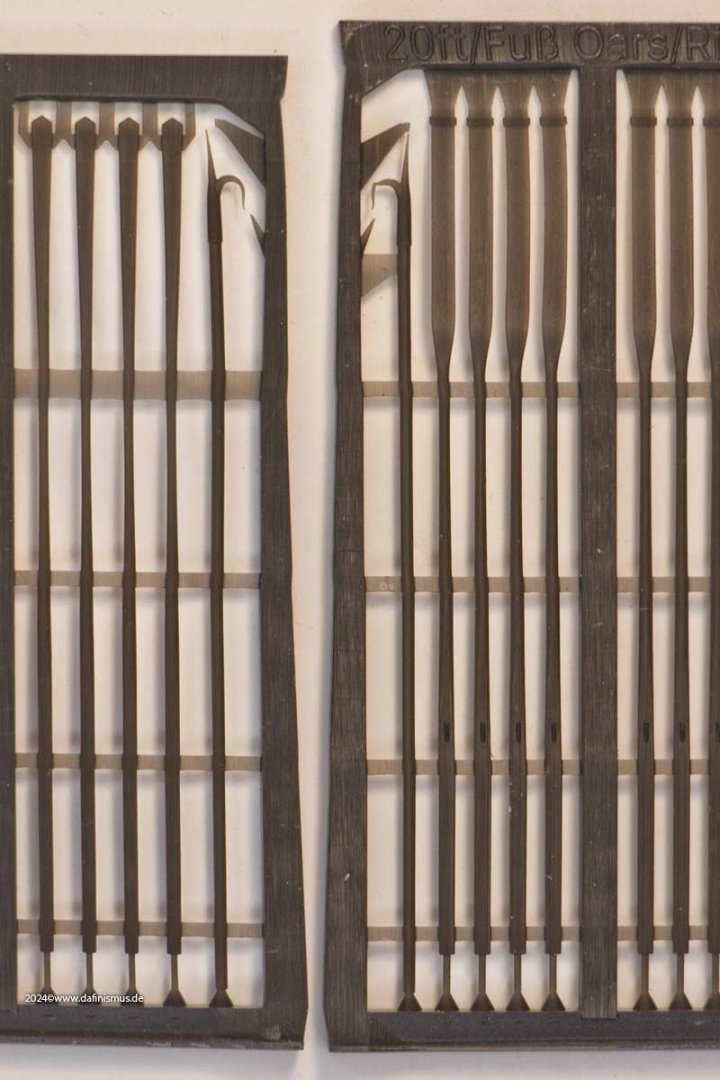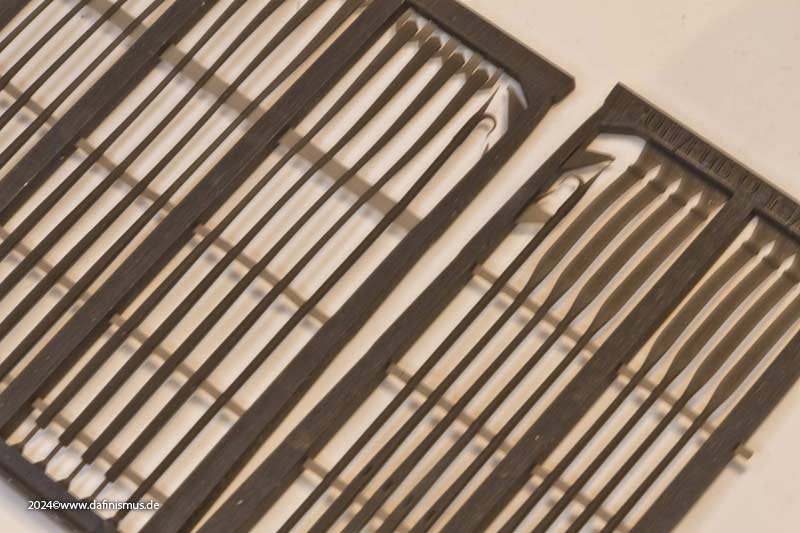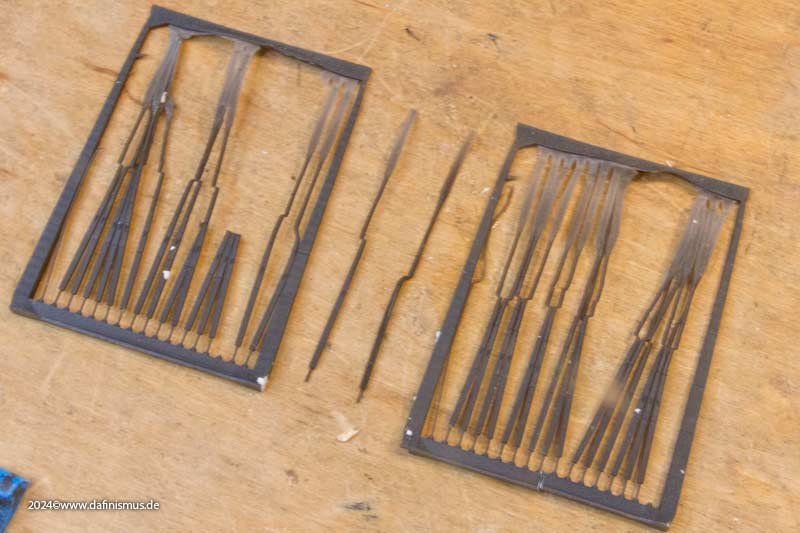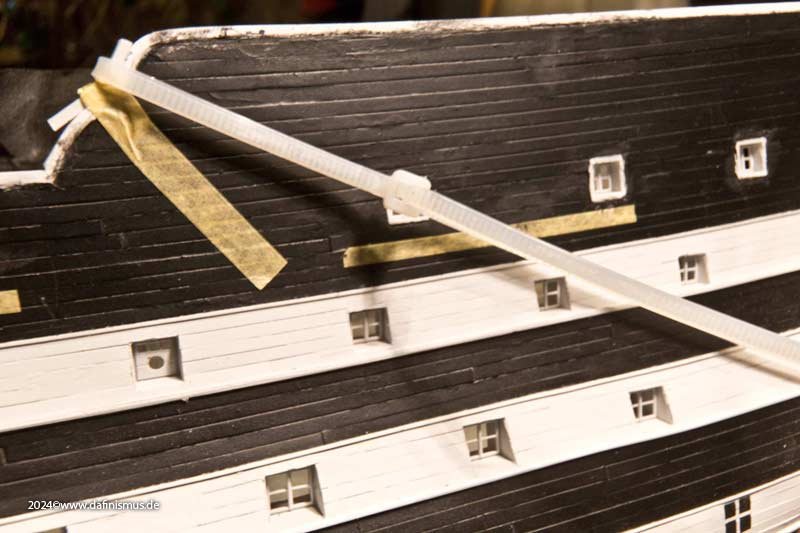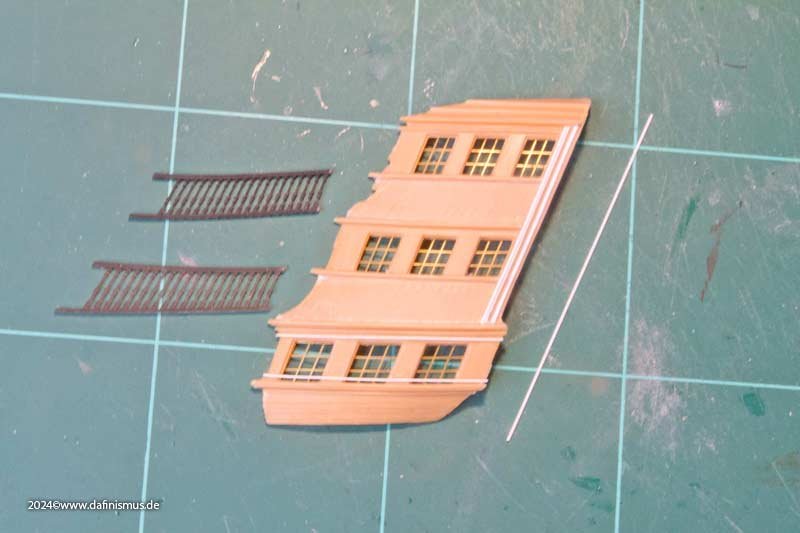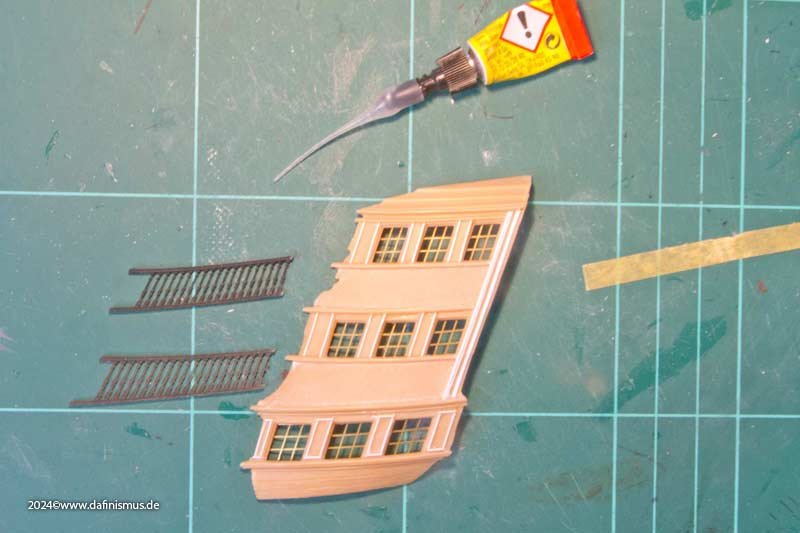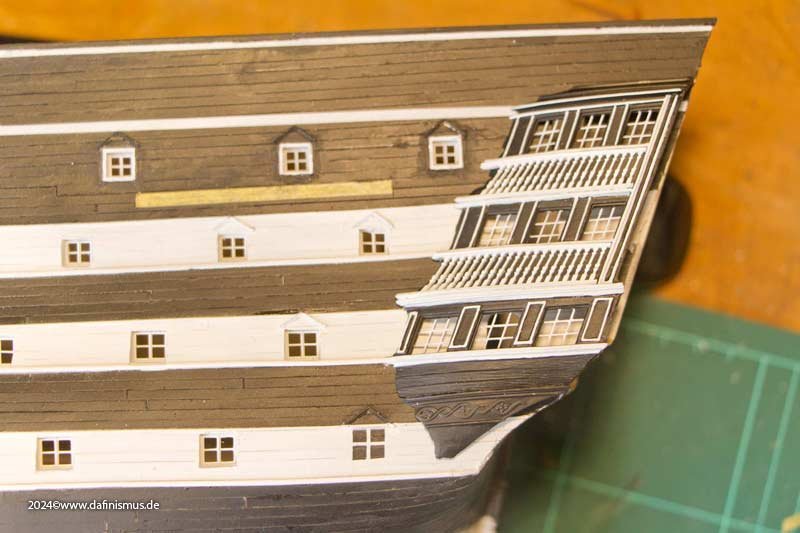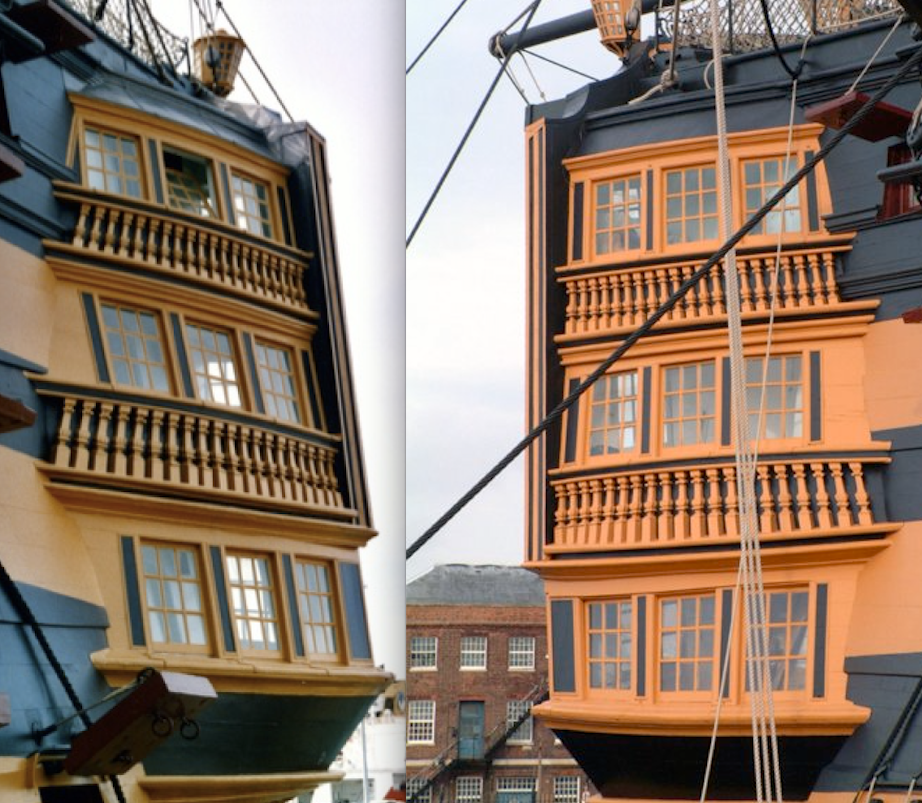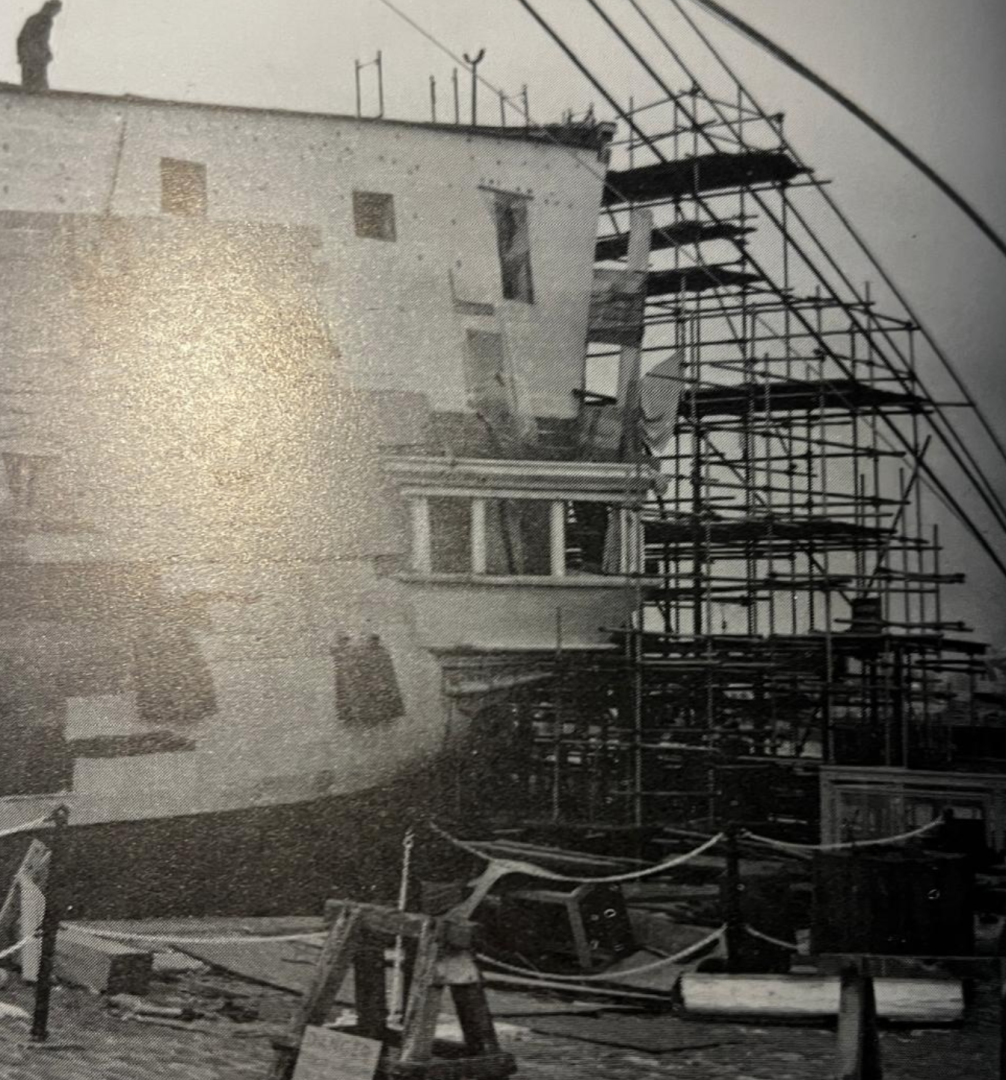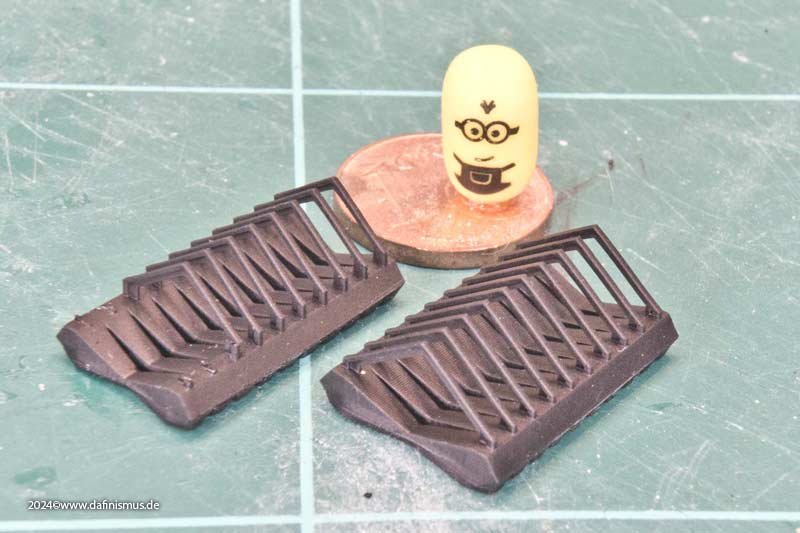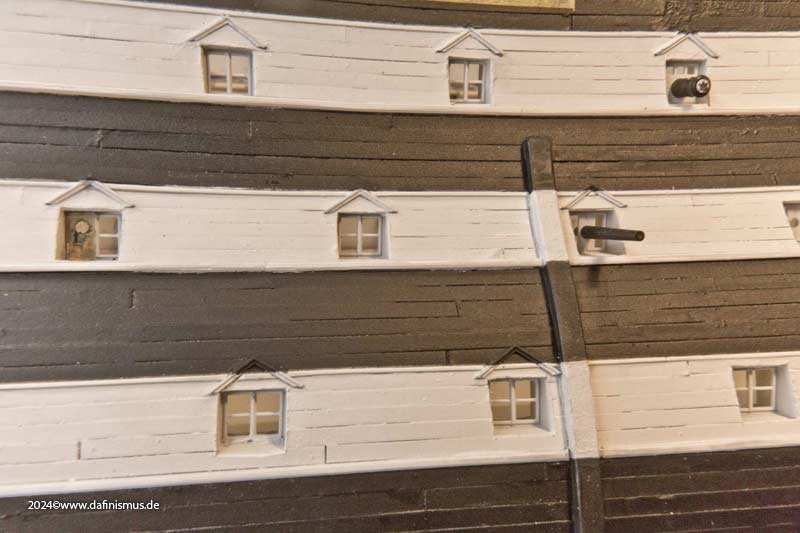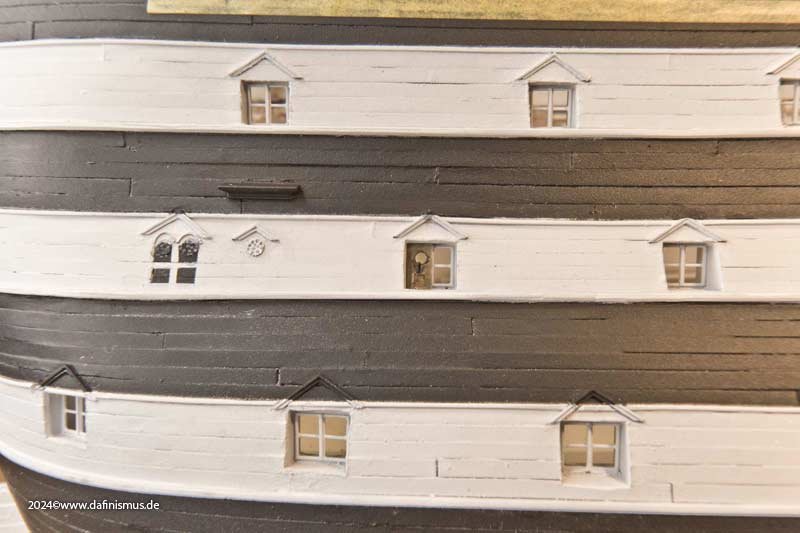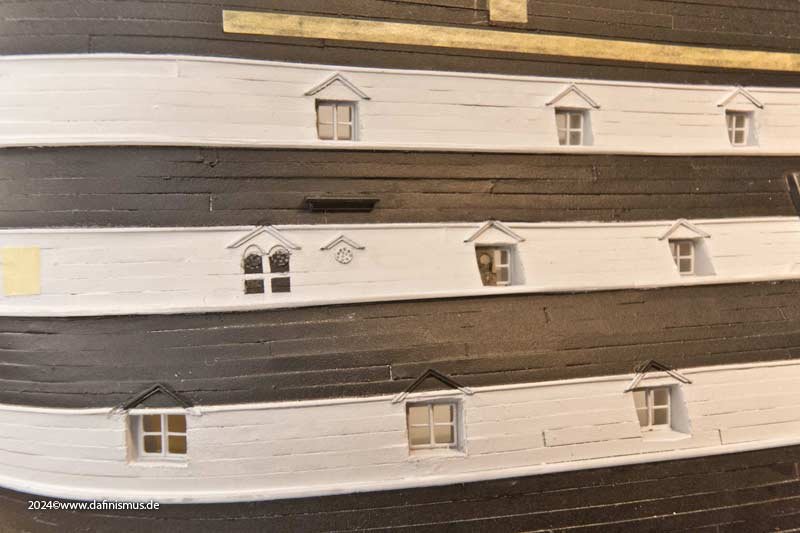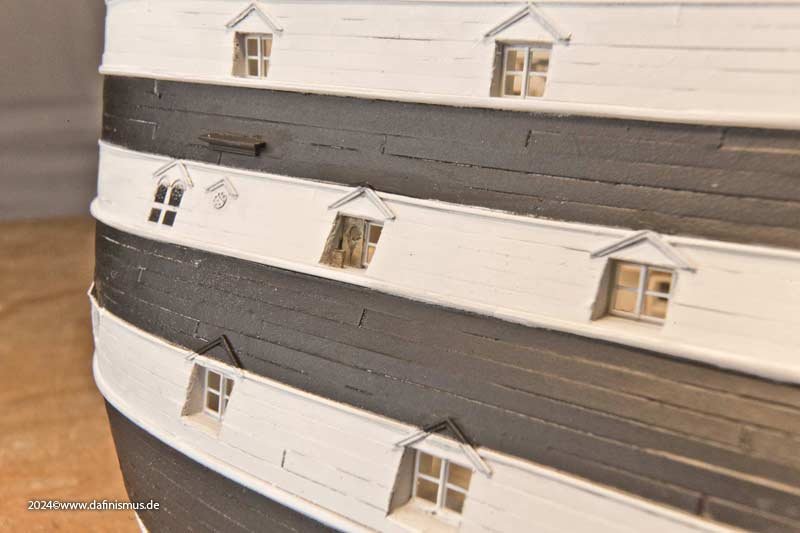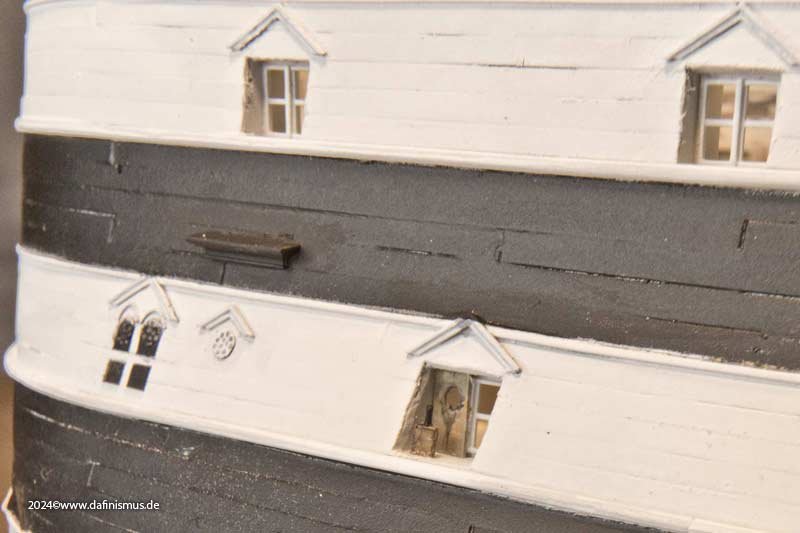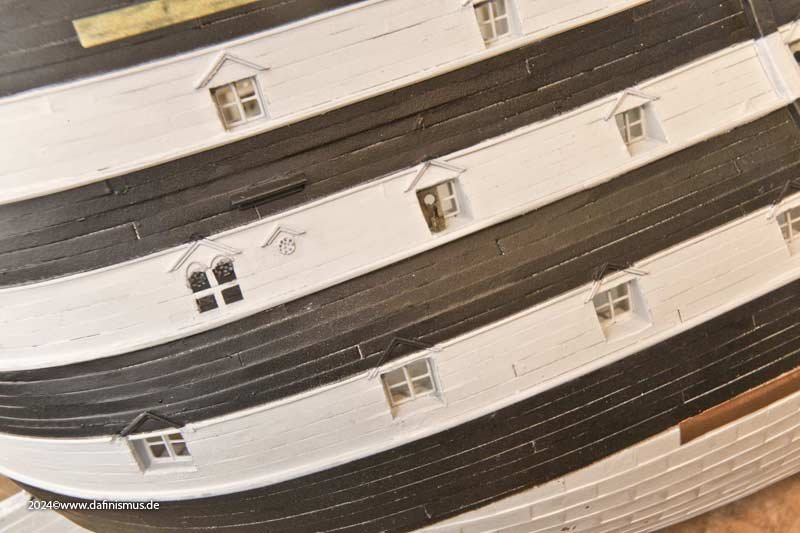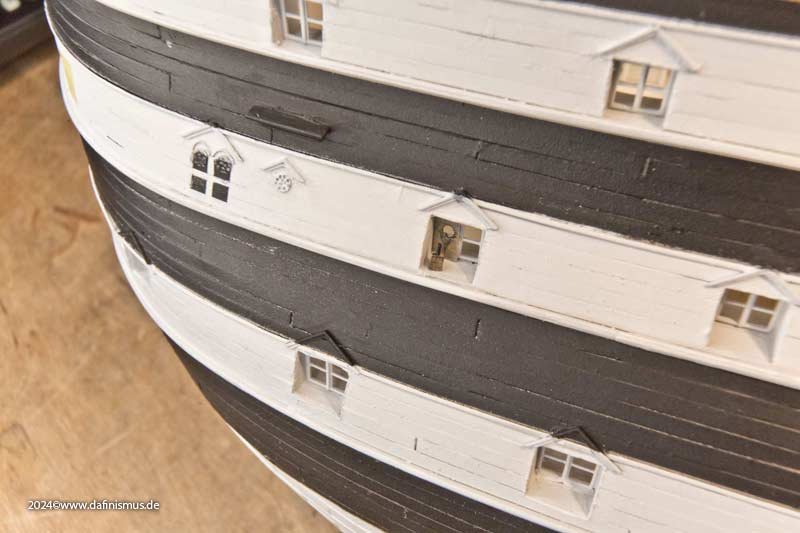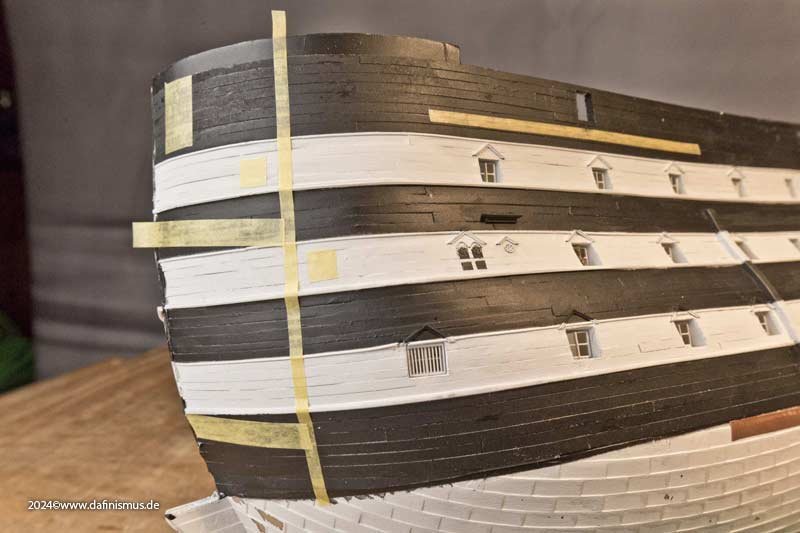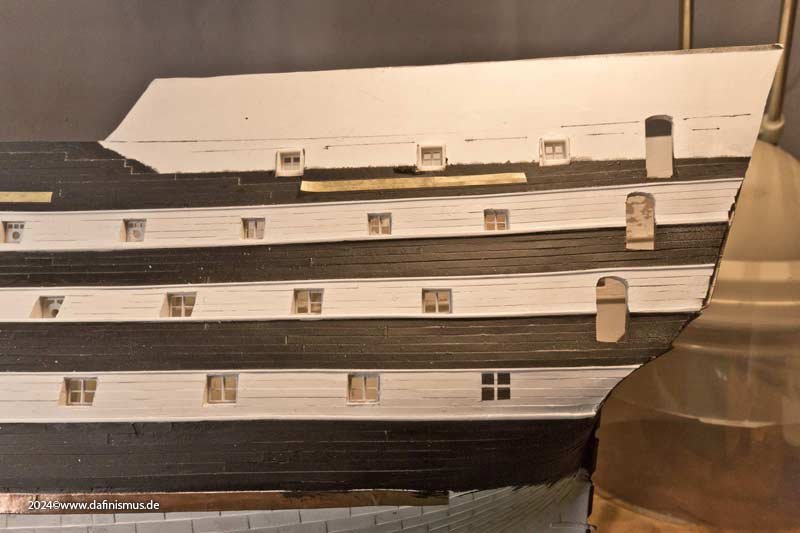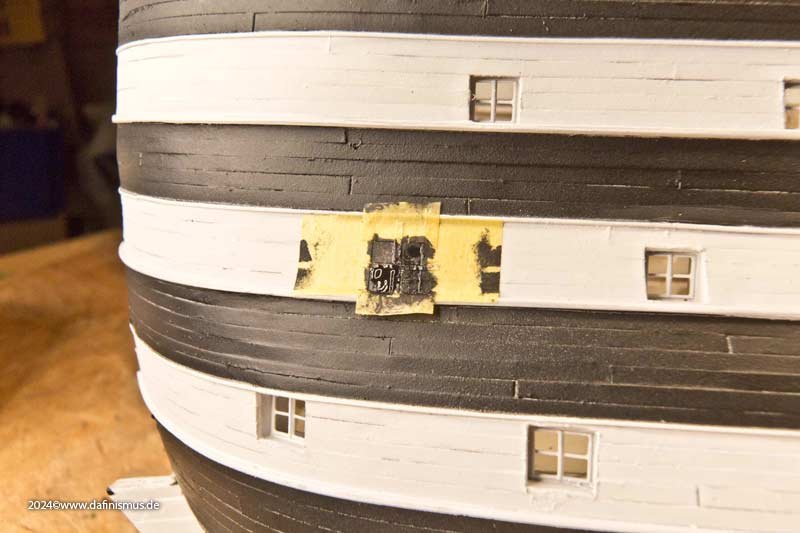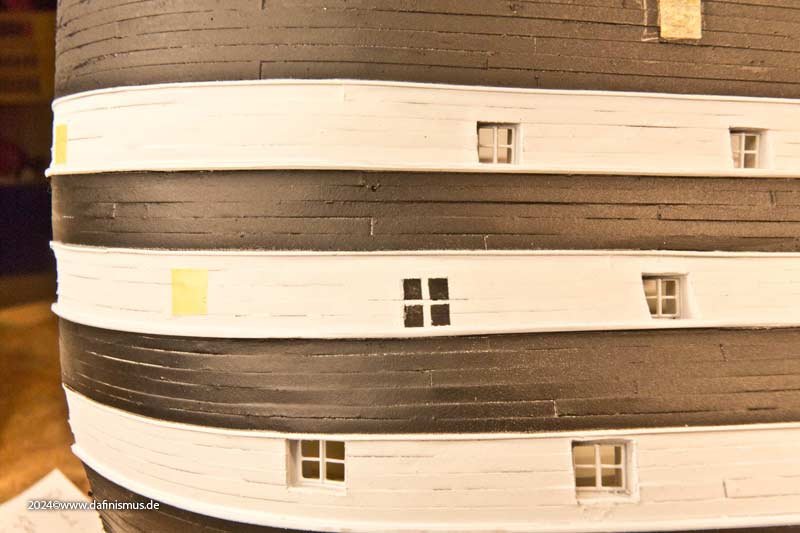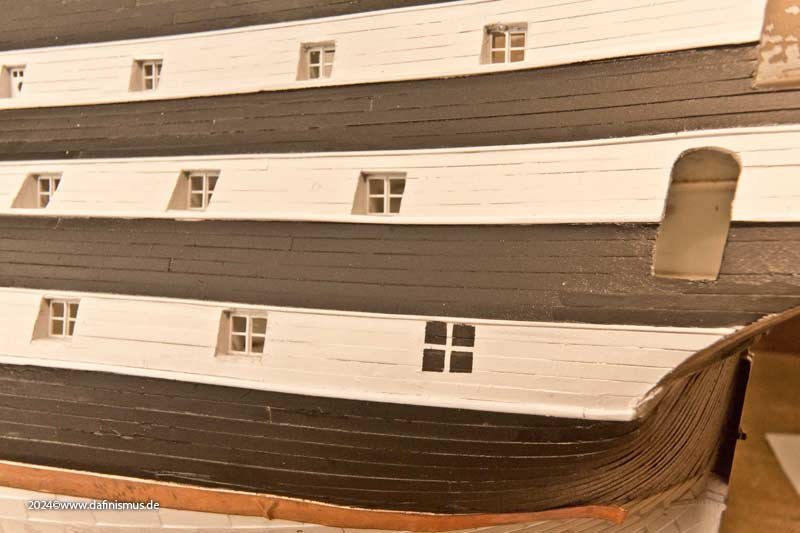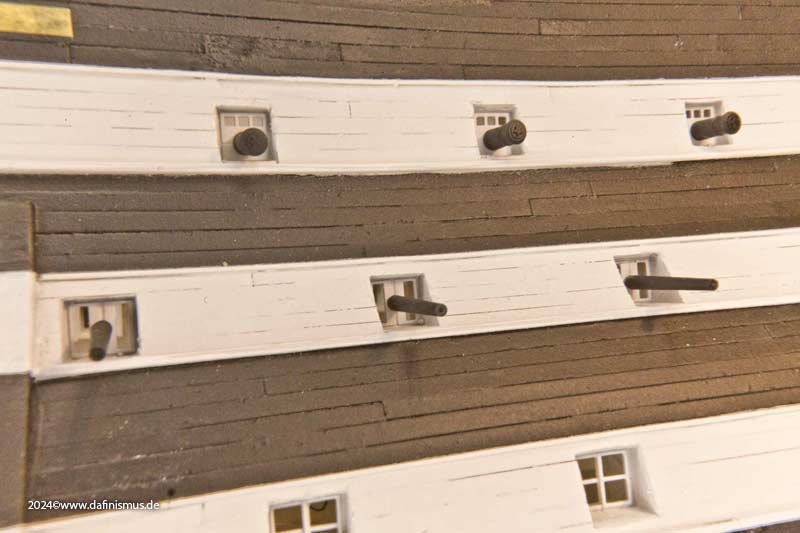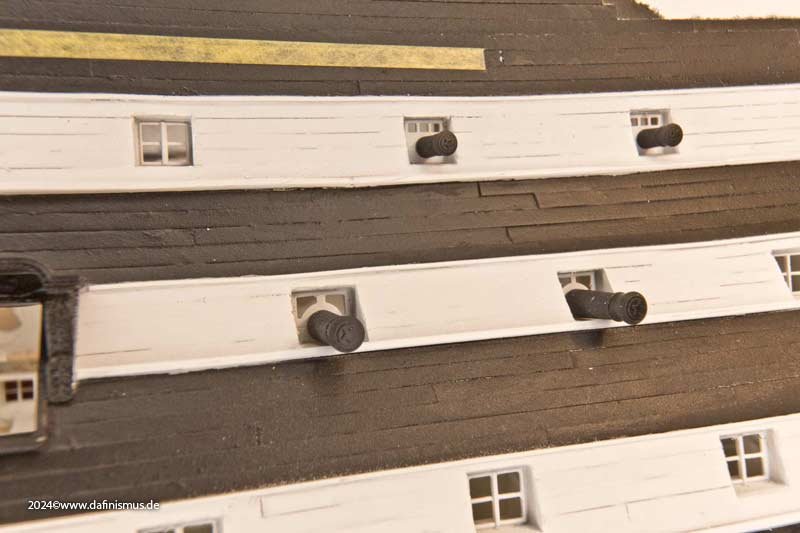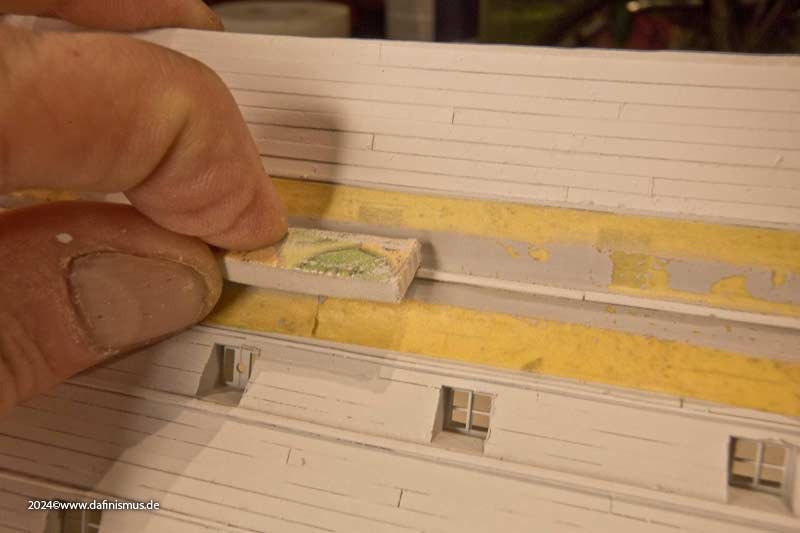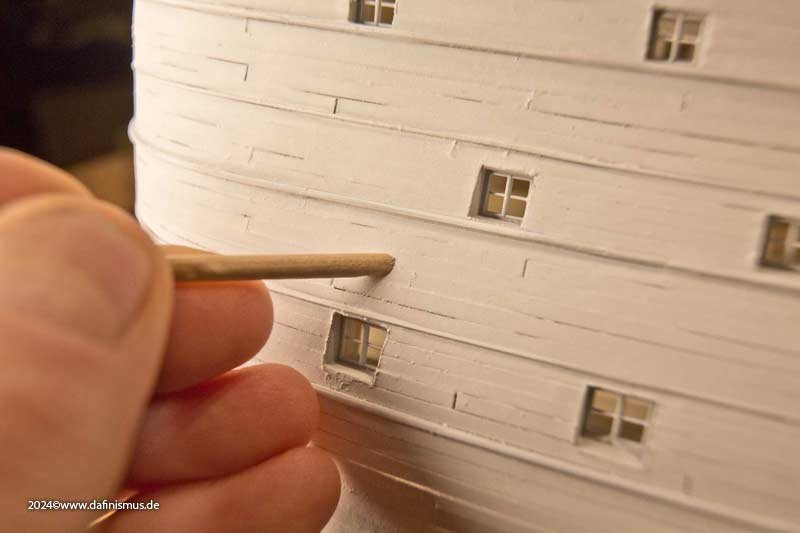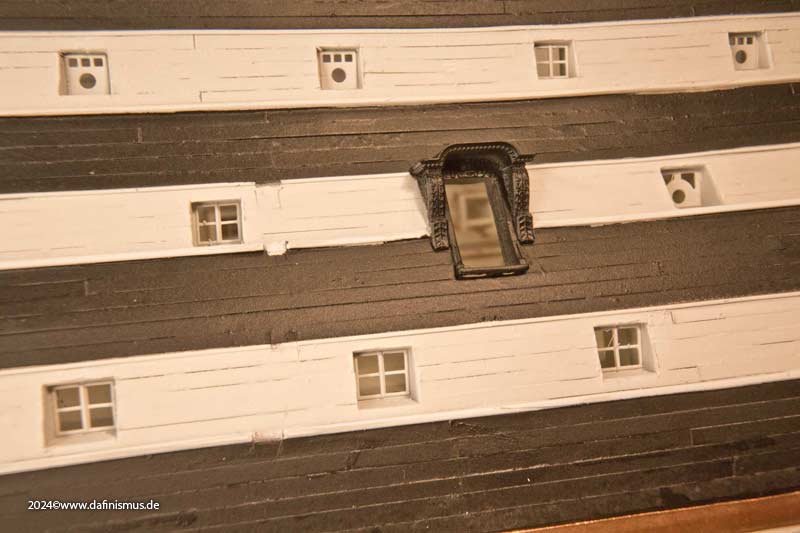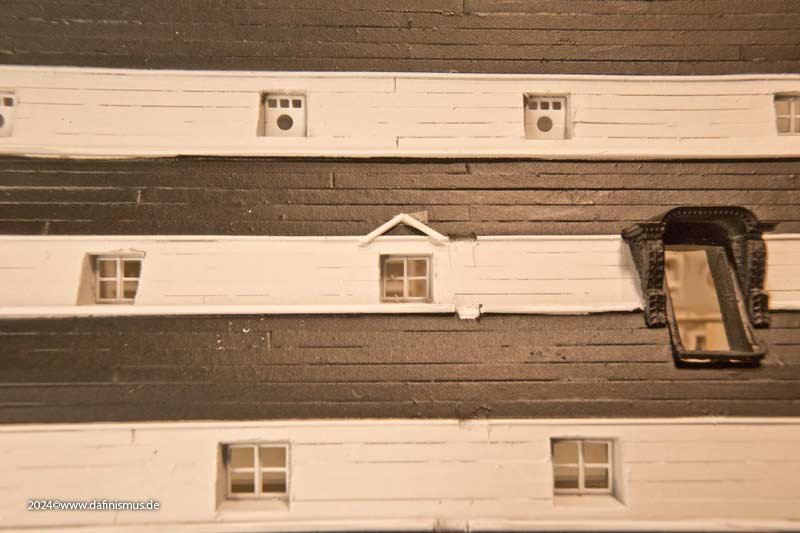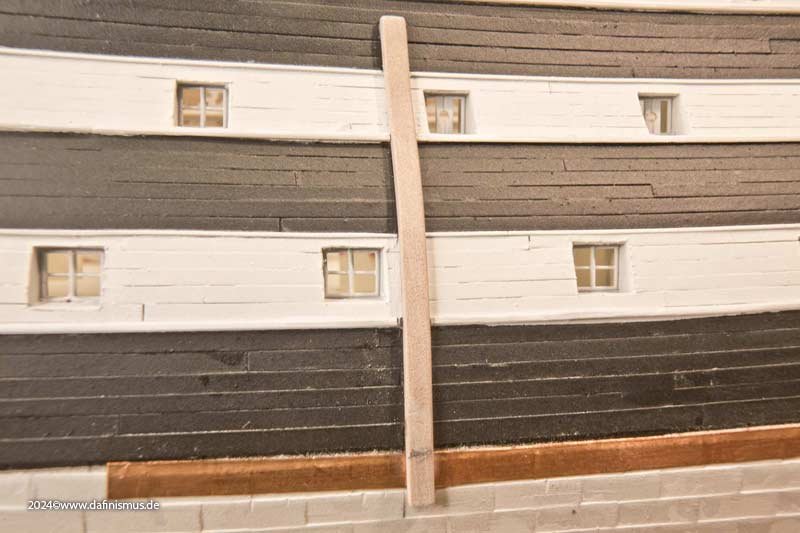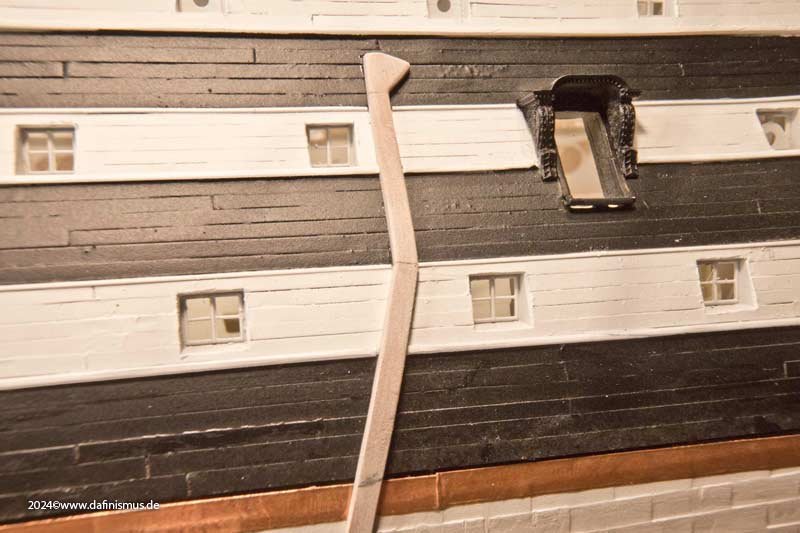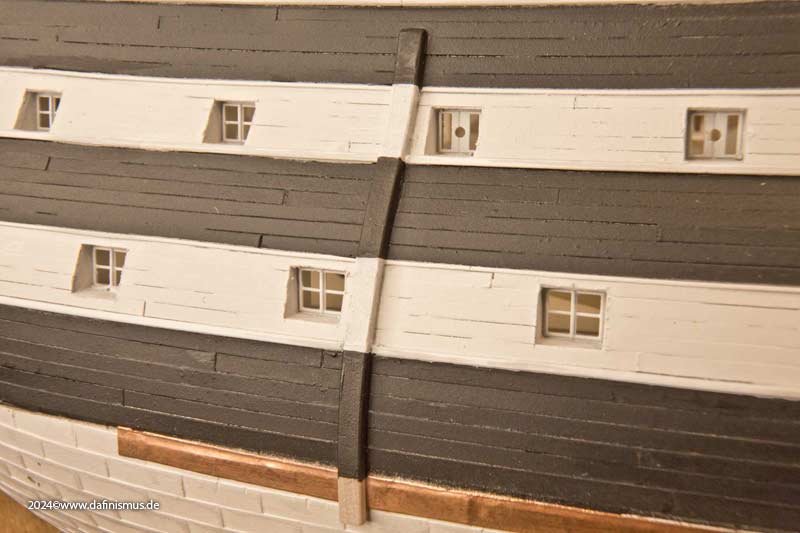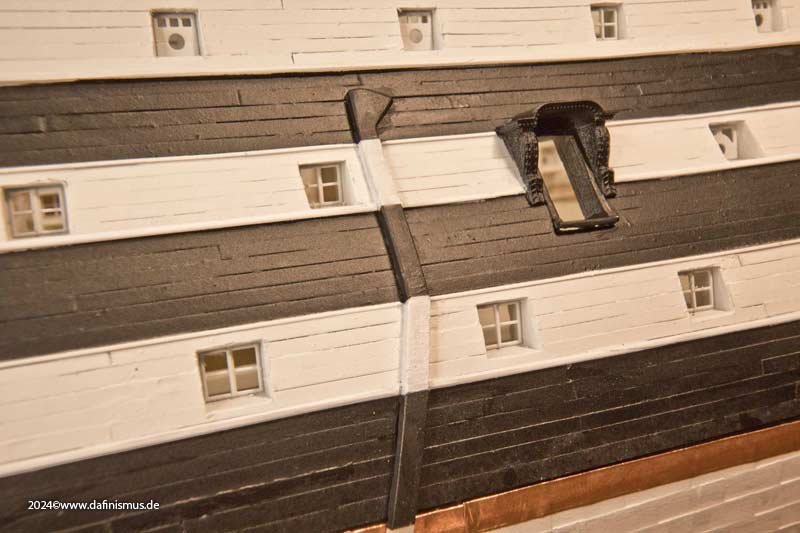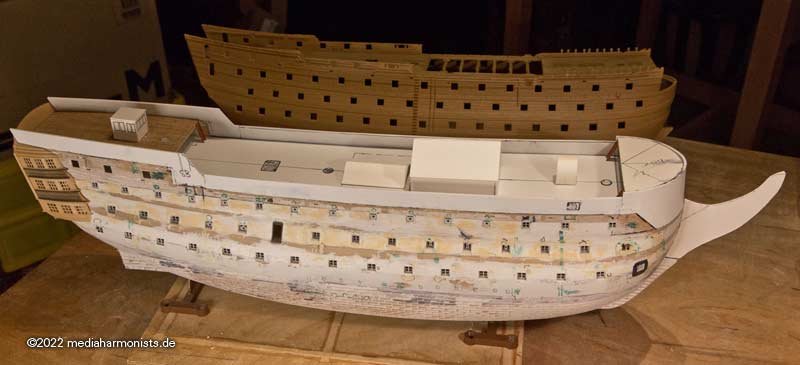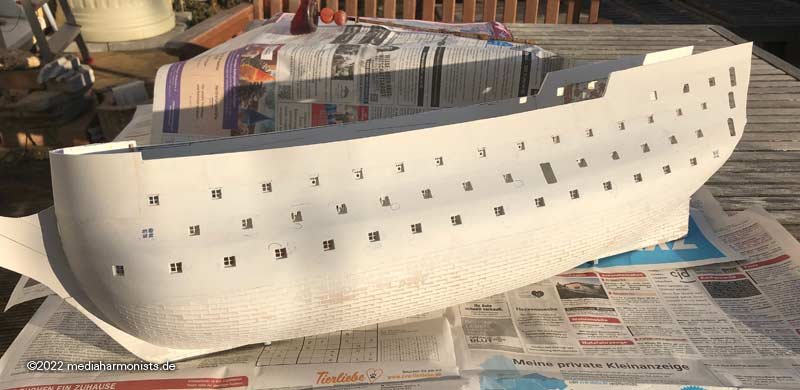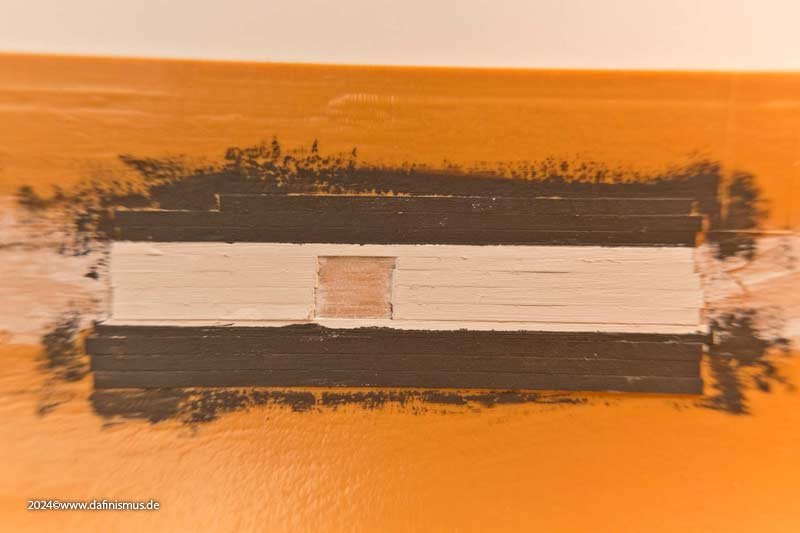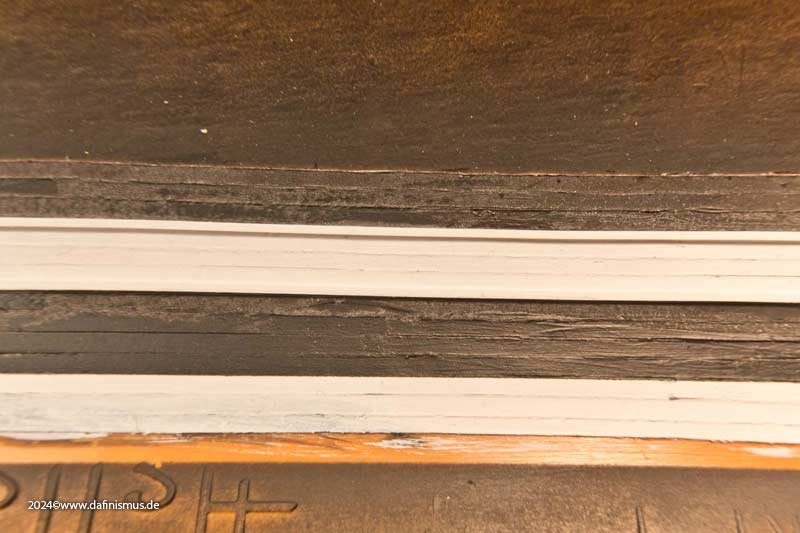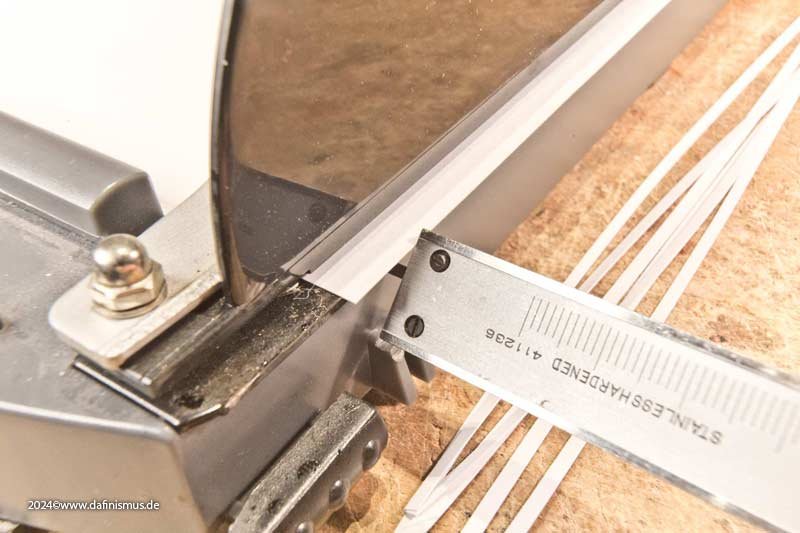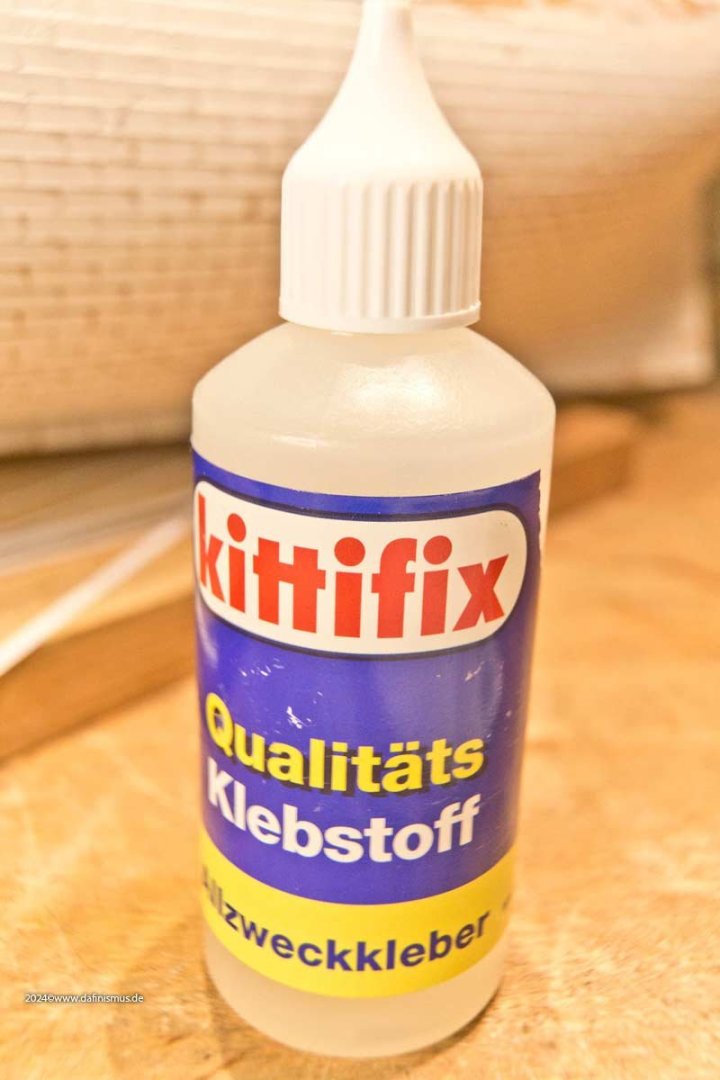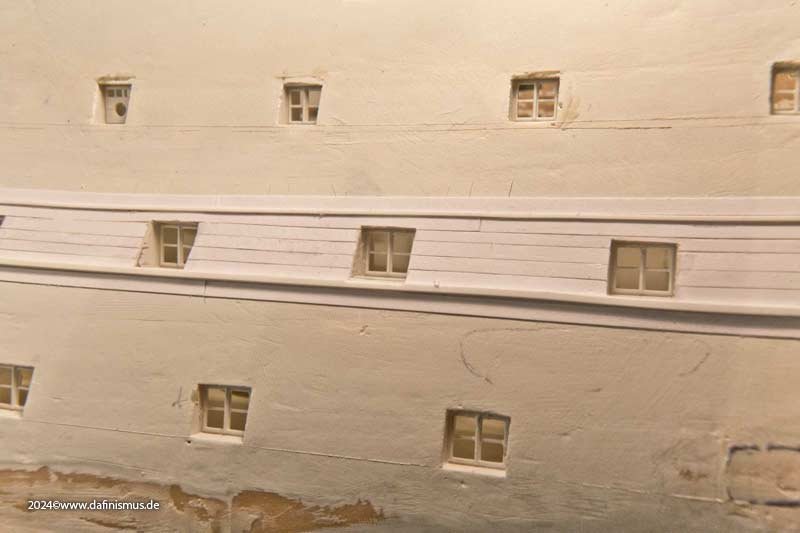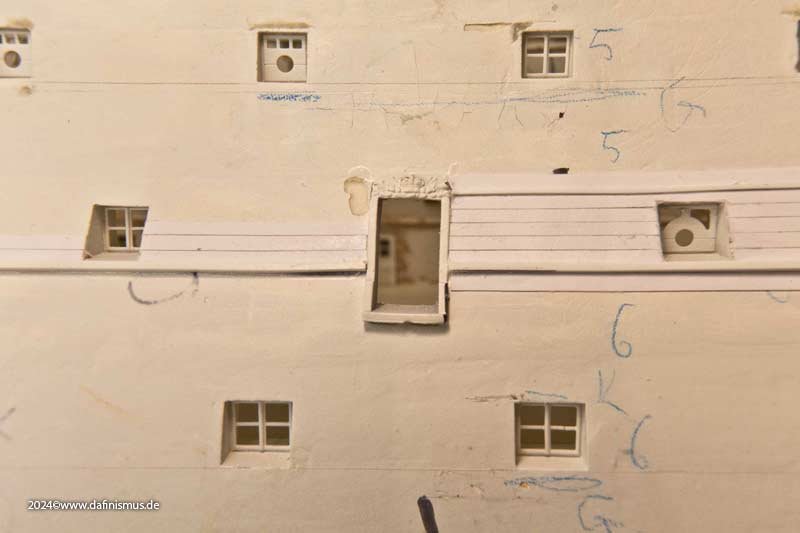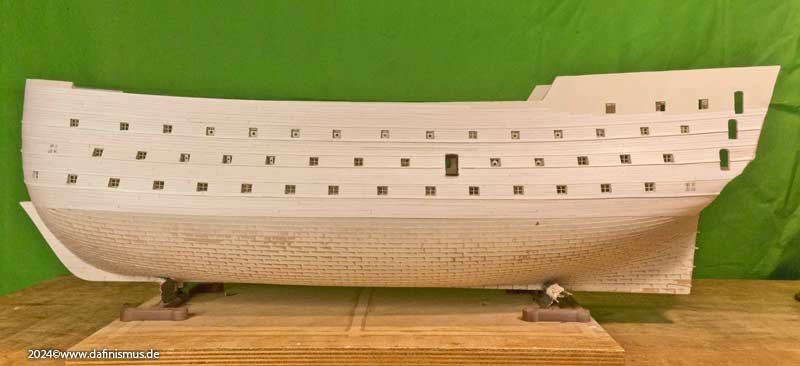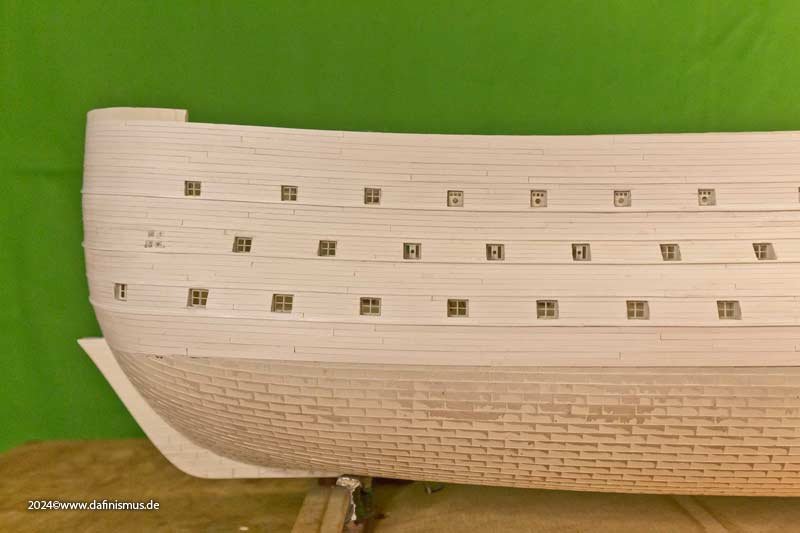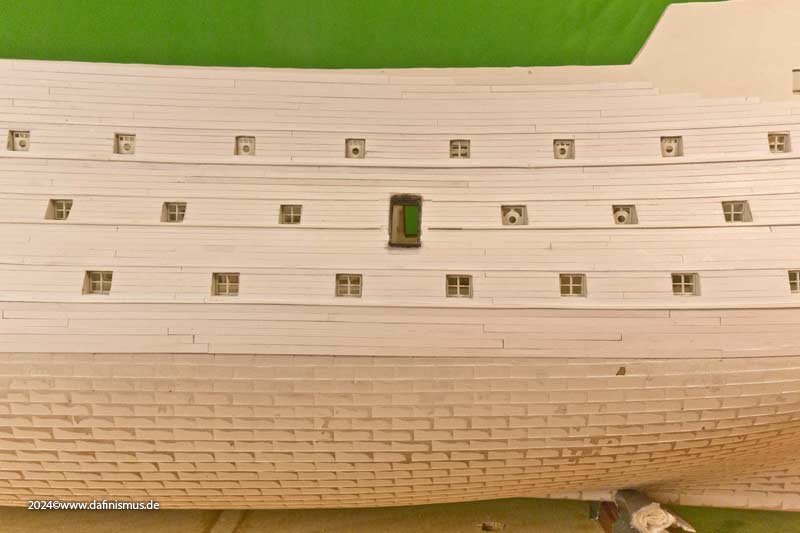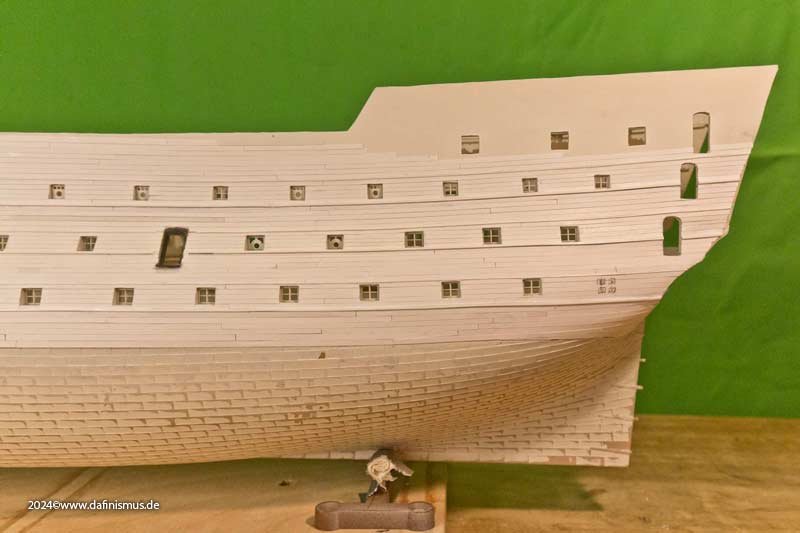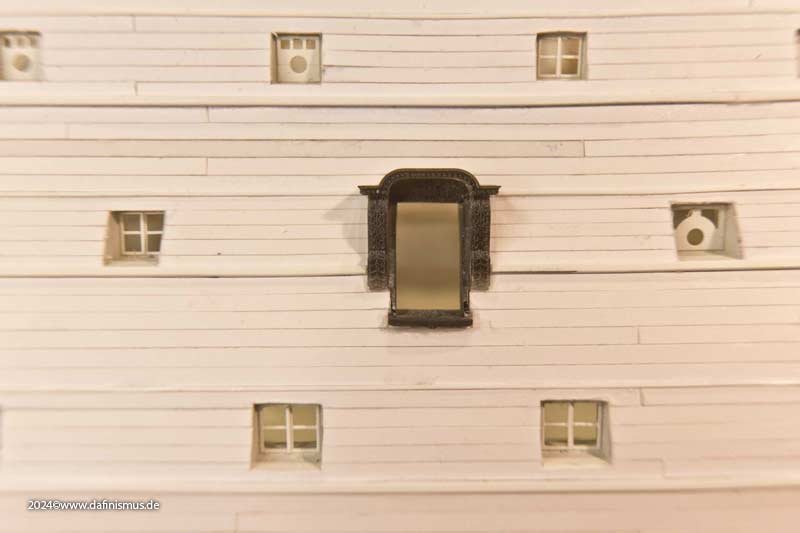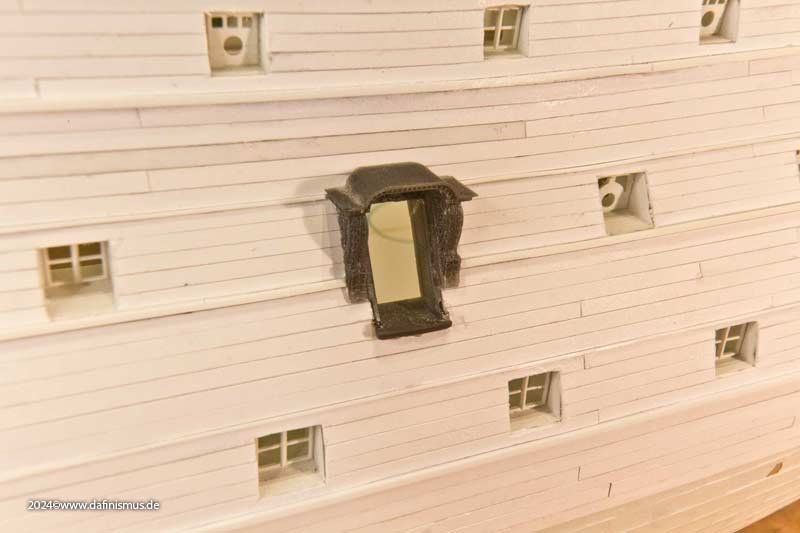-
Posts
2,411 -
Joined
-
Last visited
Content Type
Profiles
Forums
Gallery
Events
Everything posted by dafi
-
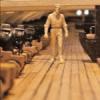
Sweeps and Oars
dafi replied to dafi's topic in Discussion for a Ship's Deck Furniture, Guns, boats and other Fittings
That was my first thought too. But I think that is a theoretical value. First the big ships of the line did not have sweeping ports and on top I believe towing with the small boats was much more effective. Or is there any contemporary source showing the use of sweeps on this type of ship? In the meantime I got my print of that volume of Steel´s work and it has much additional information not shown in his other books. The print quality and the drawings in this hard copy are of a much better quality than another volume in paparback I got some 10 years ago. Only flaw ist that the plans and tables are spread over 2 pages, mostely even not opposite pages but on the flip page ... Still puzzeling around the "A leather button is nailed on the foreside, about two inches from the loom and that edge rounded, to work easily in the rowlock" ,the small triangular bit to be seen in the graphics. If applied correctly that means a big overlap in the middle in my examples. XXXDAn -
Bad luck for me, thank you eagle eye! But there is much more that won´t fit as already the ports have another rhythm. Just see the port o the lower battery and the one on the upper battery: differently aligned ... XXXDAn
-
Thank you Druxey, but that is part of the game 🙂 Just realized that I missed one entry, here it is: I went over the stovepipe outlet cover plate underneath the fore chains. First it was reduced in size according to the source. On closer inspection of the photograph, I noticed that the support block could also be a brick. Since the entire shipyard is made of red brick, I took the opportunity to add a bit of color. Here is my comparison picture again. The shoe for the anchor is still far too small, but the rest is slowly coming along :-) Even more distinct without color. As the picture is from 1920 and the state I am showing is 10 years earlier I do not know yet how much of the rot I will show. XXXDAn
-
Sorry Druxey if I gave you a sleepless night 😇 When the side gallery was in place, it didn't seem gloomy enough. An anxious look, and sure enough, the white balusters that I had been looking forward to so much just weren't there. Crap. And painting over it looked like crap. I'm sorry, but it did. Like dafi does what dafi does best: Destruction! So I broke out the white balusters and put in new black ones. Now the eyeliner is still missing in the broad white profiles and then it could work. It's only an approximation anyway, as otherwise the side galleries would have to be completely rebuilt. At that time, the curves were less pronounced and the whole structure was more angular. But I can't reconstruct it much better with the documents I have so far. Maybe later on, new sources might turn up. And since I was just tinkering around, I added the chutes for the signal cannons. Probably so that powder and cartridge residues don't stick to the ship's side. XXXDAn
-
Parallel to the 1803 ad 1910 Vics, I have been working on the boats. Or rather on the oars. The trigger was once again the "egytian paddles" that had found their way onto an otherwise great model. To start with I did not yet get in contact about that topic. How long? What form? I had no idea. Hope you will be able to cofirm the ext steps. Fortunately, I was given quite fast a reference to David Steel's "The art of Making Masts, Yards, Gaffs, Booms, Blocks, and Oars, as Practised in the Royal Navy, and According to the Most Approved Methods in the ... of an Improved Rule for Mast-makers", a volume I wasn´t aware of before. I just ordered my copy as I found no official legal online source. In there the relevant iformatios were given in 4 tables. Oar-Making The different parts of oars are described by the engraved figures, and their dimensions by the tables. Ships’ sweeps and oars are made of hand-masts, or rafters, suited to the size and length, as per table. They should be chosen straight-grained, free from large knots, shakes, or rind-galls. They are first sawed, or jambed in a snatch-block, and hewed nearly to their size; then raised on horses, and completed by the drawing-knife, spoke-shave, or plane. Open handles are nailed to the sides of the loom in the direction of the flat of the blade, made of oak, about one inch and three-quarters deep, and two inches and one-quarter thick, hollowed to admit the hand easy between that and the loom: the length of the handle is one-third the length of the loom. Barges’, lighters’ and ships’ boats’, oars are made of fir-rafters, similar to ships’, without handles to the sides of the loom. N.B. The looms of boats’ oars are often made round. Oars and sculls for barges, wherries, and skiffs, are made of ash (and sometimes of fir) rafters, which should be chosen tough, straight-grained, without shakes or large knots. The rough wood is taken off with an axe, and finished in a neat manner on horses by drawing-knives, spoke-shaves, and planes. A leather button is nailed on the foreside, about two inches from the loom, and that edge rounded, to work easily in the rowlock: the lower end of the blade is strapped round with tin to prevent its splitting. Sculls for wherries, skiffs, &c. for choice and make are similar to wherries’ oars. The sizes relevant for my Victory boats are the sweeps for the larger workboats with straight blades and the oars with curved blades for the smaller boats. First the sweeps. They have an interesting shape. The thin round handle, the square loom, the round to elliptical shank which then transitions back into the flat of the blade. And here is the oar. Here the design is even more differentiated: round handle, rectangular loom, elliptical shank and the curved flat blade. Here, contemporary models are much more relaxed in the curve, which is why I have not shaped it as extremly as seen in Steel. Also the blades have a reinforcement against splintering on the outer end, in the contemporary models usually formed as a ring and not over the edge as with Steel. And, as always, the fallacy: It's programmed, so it can be printed straight away 🙂 Shull bit. It took a lot of convincing, but in the end something useful came out. Then some more color, dark brown primer and a lighter tone as brushing. And to top it all off, a close-up 🙂 If compared to the model oars and sweeps in RGM it seems the right direction. Still puzzeled about the triangular piece of leather that keeps the oar in place. How did it look and how was it fixed? All the best, DAniel XXXDA
-
Made a little progress over the last few days. First planked the poop railing, then built the curved end to the aft deck railing, pressed on the end strip using cable ties. Then sanded down the balusters on the side pocket, which has become quite fast. First built the dominant vertical rear end profile. Then came the other window frames. The whole thing sprayed and the white balusters glued on ... ... and then - oh horror - ... ... ... ... XXXDAn
-
Also Trafalgar was won by the French. At least in Napoleon’s newspapers. Also do not forget personal or political „corrections“, famous today still as alternative fakts or fake news. So nothing was learned since then. Also the eyewitnesses had their own apperception from a special moment or a made up memory as part of trauma or time that passed. So it is always a good starting point for a new research, a new thesis or to confirm the old known facts in spite of the new input 🙂 But sometimes something new really pops up . XXXDAn
-
I also believe that those discrepancies seen today are simply much more a result of uneven build. As an excuse, the geometrie there is not that easy 🙂 Also one sees that the hull as base is not that even anyway, as the wales in the middle tier seems to have different widths. Compare the black lines and the edges. McKay was often critisised for showing the wales applied onto the planking, but he only shows what was the state of build in those days. This is not to bash his superbe work but only tells one thing: The exhibit in Portsmouth is a wonderful inspiration, gives a great view to the general public, is well kept over the years regarding the resources in research, available material and manpower and most important budget. I am more than happy and enjoyed having been able to visit her several times and thanking all those people involved over the last 200 years. But ... ... my personal conclusion - that took me several years to realize - for modelling on a higher level forget the exhibit there and go back to the sources. Many of the things that I had to replace on my build were inspired by anachronistic features shown there. 🙂 XXXDAn PS: And I am waiting for the shockwave that Gary still will create 😉
-
Hello Kevin, thank you for pointimg that out. To be honest, never realized too much of a difference ... What I see is the usual discrepancies if parts are build without too much planning. OK Vasa was worse 😉 I know that she had a collision with HMS Goliath on 03.04.1797 that damaged the stern Galeries, lantherns and cutter. 1803 the stern was completely changed. At Trafalgar the starboard gallery was crashed by the Redoutable. Also there was a great makeover of the stern somewhere inbetween 1816/1820/1828/1860ies as first photographies show a different stern compared to the post Trafalgar drawings. And in the 1920 there was the retrofit for Trafalgar state where the galleries changed appaerance again. And McGowan shows a picture of about 1970-1980 with the larboard gallery dismanteled. So one sees there were many opportunities to mess up with the design of the galleries 😉 They are far off the elegant look they had as build. 😞😞😞 XXXDAn
-
Oh yes Jan, she was in a pitiful state. That is why she had to be removed into the drydock in 1920. One of those responsible for the restoration, during which it was returned from black and white to its "Trafalgar state", remarked at the time that he could simply push through the hull in several places with his walking stick (an indispensable life-style product of noblesse at the time). That must have been one of the places. According to my guess, this area must have housed the sanitary facilities and therefore also the shower. The resulting humid climate - together with the hormone-fertilized, corrosive sweat exhalations of young sailors - may have been responsible for the desolate condition of the ship at this spot. If you look closely at the old pictures, you can see small straight rows of dots and a difference in color. This shows that this area was covered with a few patches of painted canvas until shortly before the photo was taken. Another way to hold a ship together 😉 If I will show the canvas or if I suggest that in 1910, the state shown in the model, means before the great war, the ship was still in a slightly better condition, I do not know yet. Depends much upon the way the results of imitating the canvas turns out. XXDAn
-
The rigols have also found their way onto the model. Here still in the stack ... ... and here already at the scene of the crime. My favorite detail 🙂 But I saw afterwards that the wooden panel only covers the top panel, so I'll probably have to touch that up again. The area of the hase bolsters has already been marked on the bow and the prison cell has also been given its bars ... ... and the windows under the poop also got their window frames. XXXDAn
-
Hello Leo (?) on the pictures most of he inside is still scrach build, but most parts are already available as print. I use my scratch prototypes as template for the CAD, as I modify the original plans to fit the different appearence of the scale concerning the accentuation of the details. All the best, DAniel
-
And because it was so beautiful, we went straight on. Some of the ports have been planked up over the years. So that it still looks very well-fortified ... ... the missing windows were simply painted on. Honi soit qui mal y pense. The artillery has also found its way to the dressed rehearsal. In front are the three signal cannons for the salute, above them short 12-pounders from dubious historical stocks ... ... and amidships the historic Trafalgar guns - or what they were considered to be at the time 😉 And before the questions come, yes, the barrels did indeed sit on the lower portframe back then. Improperly executed changes to the port dimensions and incorrect carriages ... XXXDAn
-
When it rolls, it rolls, or the victory of impatience over model-building caution. Once I was this far along, I naturally wanted to see the whole thing in paint. This was a risk because the paper planking is quite sensitive and I still had to do the whole other side. But, but, but: it just had to be done. I had slightly oversized the separating battens, so I sanded the thicker one even thinner and broke the edges. It did the whole thing good. I used the masking tape to protect the paper planks. This worked really well. After the first round of white spray over everything, a beveled skewer was ideal for removing grains and impurities. Then I generously covered the white strip with masking tape and used the profile battens to cut it into shape with a scalpel, which went really quickly. Then black spray and removed the masking and simply: JOY! It worked. The first size sample of the rigols hung up. Very striking on the contemporary hull are the many additions, here the downpipes, probably plumbing. But with a little paint, they blend into the overall work of art in such a way that one thinks they have always been there ;-) Enjoy, DAniel
-
Well, and the little fat one with the stripes is still stuck in the camper van since Evian. Nevertheless, there is always enough Victory for me to do. I really missed the 1910 model at the last two exhibitions, as I like to show the developments on the ship. Time to take another look at my victorian black and white beauty. The first construction phase was January to March 2022, so that's already 2 years ago. A brief look back: After sanding down and fattening up the entire side of the ship to get a level surface, she looked all tattered at first. But the grace of the paint brought back some decency and dignity. But in this state I realized one thing: A lot of glue and car filler had caused the hull halves to warp outwards quite a bit, 2 mm on the port side and 6 mm on the starboard side :-0 Then I was initially frustrated, but also realized that I should let the material work out in peace and see if it would still turn out any good. And I think it's going to become something in the end. The good girl was released from her slumber and thoroughly checked. Deformation no had longer increased. However, it will take a lot of bending force, but I think the decks can manage this, with a little internal help if necessary. But that will only come when the time comes. Why? I can only insert the decks once the window panes have been inserted. I can only insert the window panes once the outside has been painted. And I can't paint the outside until the planks are in place. So I had to take care of the planks. In the past, I liked to use 0.2 mm ABS sheet, but the plastic glue tended to leave fingerprints. Wood was too thick for me and too time-consuming to procure. That's why I went exploring in my model maker friends' circles and found what I was looking for: 250 gram paper/cardboard. Initial tests were quite inspiring. In the original, there were wooden battens nailed on in two thicknesses to separate the colors. I made these from Evergreen, although I made them slightly thicker for handling reasons. So planks cut on the guillotine shears ... ... and opened the glue pot. First planks are slapped on ... ... and even that didn't put me off any further :-) And at some point the port half was planked, deliberately disregarding all planking schemes. And in case anyone thinks that the entrance gate visible today is original, no, the gate that can be seen today is from this state of construction and was installed in the ship between 1820 and 1828. One gate further back than as build. And these port parts were simply reinstalled one port further forward in 1920 and declared as Trafalgar state. Honi soit qui mal y pense. Fortunately, I've had the parts in my supply kit for a long time, so I just had to grab them. For me as a plastic person, the tight planking around the stern was of course something new. I'll have to clean it up a bit, then it'll fit. And I don't know why I remembered some well-known lines in the next picture ... "Beneath us, visible to all, lay a huge spaceship, one hundred and fifty meters long, shaped like a smooth sneaker, snow-white and maddeningly beautiful. At its heart was a small golden box containing the most sophisticated invention ever made, an invention that made this spaceship something unique in the history of the galaxy, an invention that gave the spaceship its name - 'Heart of Gold'." - The Hitchhiker's Guide to the Galaxy, Chapter 4 But what still looks like this ... ... should develop into this :-) Cheers, DAniel
-
Hy all, I am quite sure that in the picture shown above those were simple cloth - or hammocks - but no hammock stanchions or solid builds for many reasons. First the picture from my Constitution fighting top in #4 is taken out of context, as this was a mere test shot for the proportions of the small howitzers placed up there during engagements. There is still missing the usually placed netting on the wooden rail, that served for safety reasons. The cloth on the rails are seen often and served for several reasons: Originally I know them as fighting cloth already from the times of the galleons and they served as view protecion for the crew while engagements on decks and atop. Often seen on Van der Velde. Those develloped very fast to be a colorful assets and in the 17 hundrets it was a most colorful decorative element to make ship look great as seen on many paintings. Also the same colored cloth was used for the handrails and bulkwards along the ship´s sides and in the tops. Sadely those elements were often taken out from historical models during restauration and I know of three that suffered that fate. Later appearing were those simple white cloth - sail cloth or hammocks - in case of engagement as view protection to hide the situation onboard or atop and the whereabouts of the fighting measures. Also on Trafalgar it was mentioned that wet white cloth was used covering the hammocks on Victory. I doubt that it was a permanent fixture especially in the tops as this would add unwanted surface for wind pressure and quite sure no fixed bulkwark for the same reasons plus the extra weight. The same goes for the hammock cranes. For the quote in #1 with the hammocks in the tops I give you another guess: In many pictures of engagements I saw the deadeyes and lanyards wrapped in cloth to protect them. So my guess is that the hammocks could have been used for that reason in the tops. 🙂 XXXDAn PS: Some fast found samples 🙂
-
In the meantime, the swivels have been finished. Here is the status of the last pictures ... ... the one with the breathing problem 😉 For a simpler assembly I have simply rethought. I already detached the trunnions from the barrel of the Constitution guns and printed them on the gun carriage. In this way I was able to represent the flaps at any elevation angle of the barrel and without the classic gap at the top. The tube then had the mount on the underside where the trunnions were: beautiful, practical and invisible 🙂 I used the same method here. The trunnions are integrated into the fork, stabalizing it while printing and especially during washing, and the mount was recessed under the tube. Now only 3 rounds of test prints were necessary until the necessary tolerance/clearance under the tube was found so that the mount works easily and yet with good guidance. Painting is done with the fork mounted, otherwise it will no longer fit. The test assembly was then possible without any losses within a few moments and, above all, in a very relaxed manner 🙂 And here's the whole little kit: the printling in its housing, which ensures that no small parts get stuck to the base plate during printing, as the superstructure "collects" them. It also serves as protection during washing and shipping. And on the left, the individual parts and the assembled piece. Visually, the assembled parts do not differ from the previous models, but they are much more precisely aligned and thus appear tidier. Incidentally, I borrowed the large fingers from a Greek Cyclops. They are slightly smaller than the North African ones. But only a little. Best regards, Daniel
- 58 replies
-
- Revell
- Constitution
-
(and 1 more)
Tagged with:
-
A while ago I was asked about the swivels in the Constitution's fighting tops. Since I liked the shown contemporary swivel, I programmed it, just to see what the printer would produce. The result was 3 separate parts: Barrel, fork and holder, the rear support of the fork is 0.2 mm thick. And you can see that it is actually fully movable, laterally and in height. Here the printing of the resin is no longer the threshold to the event horizon, but actually the pressure on the builder and his breathing to shear the 0.3 mm trunnions into the eyes of the fork. And with a little color, it looks pretty good. If only I hadn't shot off the front two ones, bluntly glued on is actually always crooked in this scale ... XXXDAn
- 58 replies
-
- Revell
- Constitution
-
(and 1 more)
Tagged with:
-
Merry Christmas everyone. It's been a while since Evian, but my little fat girl with the stripes is still slumbering in her transport box in the camper van. Too much to do in the time before the contemplative time. Nevertheless, there was some news. Late additions and news. First the late addition 🙂 Some time ago I needed some more guns. The proportions of the kit barrels are actually quite good, and with the etched parts you can also get the coat of arms on quite well. However, the most difficult part was always the part that you see the most - the muzzle. In the past, I had always closed it with some sprue and drilled a new hole, which was acceptable for individual pieces but annoying for mass production. Since I already had the basic programming for the guns of the USS Constitution, I took the Blomefield lines from the contemporary plans and updated them in the file and also added the coat of arms in the correct thickness for the scale. So I was able to reconstruct the whole set of guns quite quickly, I still use the gun mounts from the box. Here's the old and the new together. Here is the difference between the untreated kit carronade and the new one, once pure and once with paint. The long tubes also benefit. The basic proportions are correct, but now the reinforcement rings are more clearly defined and the crest fits the scale. Here is a comparison of the lengths of the 12-pounders: short, medium, long, medium, short. I also took the opportunity to attach the flint lock. Because you never actually saw the empty pan shown otherwise. Either there was a cover over it or the flint lock was fitted. I think it was worth it 🙂 XXXDAn
-

Carronades
dafi replied to DennisL's topic in Discussion for a Ship's Deck Furniture, Guns, boats and other Fittings
-
After many trials with real serving and other methotds even using wire I came for my Vic 1/100 to imitating the serving with white glue. Three layers of white glue, smoothed with spit and fingers, and then applying black paint. In my case the best result for the real thin ropes and also good in the time/effect ratio 🙂 XXXDAn
-
It was that time again. My little one had wanderlust again and wanted to get out. Evian on Lake Geneva was the destination this time, a big meeting of the French. And as Madame doesn't like travelling, I was allowed to come along too. And a few other bits and pieces. The SMS Trinkstein was a big hit! The number of times Joachim had to tell the story is mind boggling, as the dafi was never there, he was at all times everywhere and gossiping with everyone. Thanks Joachim for the help! Captain Hornblower's starting scene was also well received, Capitaine sans peur as he is called in French, the captain without fear. Various printed parts ... ... working stuff ... ... books ... ... and of course savoury slices - after all, the French are gourmets 🙂 And the little one was also very excited ... ...we had a photo session with her straight away. Best regards, DAniel
About us
Modelshipworld - Advancing Ship Modeling through Research
SSL Secured
Your security is important for us so this Website is SSL-Secured
NRG Mailing Address
Nautical Research Guild
237 South Lincoln Street
Westmont IL, 60559-1917
Model Ship World ® and the MSW logo are Registered Trademarks, and belong to the Nautical Research Guild (United States Patent and Trademark Office: No. 6,929,264 & No. 6,929,274, registered Dec. 20, 2022)
Helpful Links
About the NRG
If you enjoy building ship models that are historically accurate as well as beautiful, then The Nautical Research Guild (NRG) is just right for you.
The Guild is a non-profit educational organization whose mission is to “Advance Ship Modeling Through Research”. We provide support to our members in their efforts to raise the quality of their model ships.
The Nautical Research Guild has published our world-renowned quarterly magazine, The Nautical Research Journal, since 1955. The pages of the Journal are full of articles by accomplished ship modelers who show you how they create those exquisite details on their models, and by maritime historians who show you the correct details to build. The Journal is available in both print and digital editions. Go to the NRG web site (www.thenrg.org) to download a complimentary digital copy of the Journal. The NRG also publishes plan sets, books and compilations of back issues of the Journal and the former Ships in Scale and Model Ship Builder magazines.

